cellular automata
description: discrete model studied in computability theory, mathematics, physics, complexity science, theoretical biology and microstructure modeling
62 results
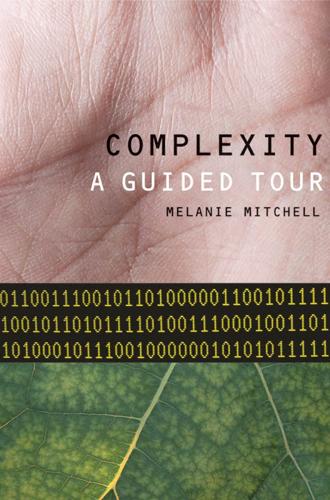
Complexity: A Guided Tour
by
Melanie Mitchell
Published 31 Mar 2009
With all that fame, funding, and the freedom to do whatever he wanted, Wolfram chose to study the dynamics of cellular automata. In the spirit of good theoretical physics, Wolfram set out to study the behavior of cellular automata in the simplest form possible—using one-dimensional, two-state cellular automata in which each cell is connected only to its two nearest neighbors (figure 10.4a). Wolfram termed these “elementary cellular automata.” He figured that if he couldn’t understand what was going on in these seemingly ultra-simple systems, there was no chance of understanding more complex (e.g., two-dimensional or multistate) cellular automata. Figure 10.4 illustrates one particular elementary cellular automaton rule.
…
Like complex systems in nature, cellular automata are composed of large numbers of simple components (i.e., cells), with no central controller, each of which communicates with only a small fraction of the other components. Moreover, cellular automata can exhibit very complex behavior that is difficult or impossible to predict from the cell update rule. Cellular automata were invented—like so many other good ideas—by John von Neumann, back in the 1940s, based on a suggestion by his colleague, the mathematician Stan Ulam. (This is a great irony of computer science, since cellular automata are often referred to as non -von-Neumann-style architectures, to contrast with the von-Neumann-style architectures that von Neumann also invented.)
…
For these reasons, people don’t use Life (or other “universal” cellular automata) to perform real-world computations or even to model natural systems. What we really want from cellular automata is to harness their parallelism and ability to form complex patterns in order to achieve computations in a nontraditional way. The first step is to characterize the kinds of patterns that cellular automata can form. The Four Classes In the early 1980s, Stephen Wolfram, a physicist working at the Institute for Advanced Study in Princeton, became fascinated with cellular automata and the patterns they make. Wolfram is one of those legendary former child prodigies whom people like to tell stories about.
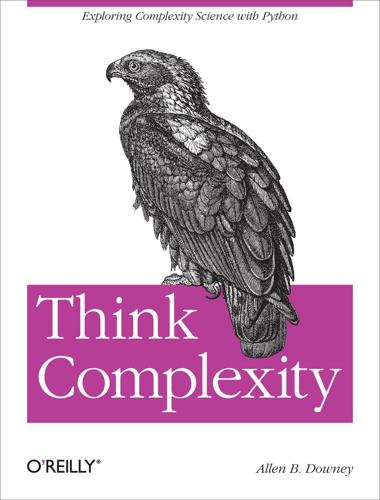
Think Complexity
by
Allen B. Downey
Published 23 Feb 2012
In particular, it focuses on complex systems, which are systems with many interacting components. Complex systems include networks and graphs, cellular automata, agent-based models and swarms, fractals and self-organizing systems, chaotic systems, and cybernetic systems. These terms might not mean much to you at this point. We will get to them soon, but you can get a preview at http://en.wikipedia.org/wiki/Complex_systems. A New Kind of Science In 2002, Stephen Wolfram published A New Kind of Science, where he presents his and others’ work on cellular automata and describes a scientific approach to the study of computational systems. We’ll get back to Wolfram in Chapter 6, but I want to borrow his title for something a little broader.
…
Do you get the sense that practicing philosophers think highly of Popper’s work? What Is This a Model Of? Some cellular automata are primarily mathematical artifacts. They are interesting because they are surprising, useful, or pretty, or because they provide tools for creating new mathematics (like the Church-Turing thesis). But it is not clear that they are models of physical systems. If they are, they are highly abstracted, which is to say that they are not very detailed or realistic. For example, some species of cone snail produce a pattern on their shells that resembles the patterns generated by cellular automata (see http://en.wikipedia.org/wiki/Cone_snail).
…
beetles, Falsifiability behavior, Explanatory Models BetterMap, Hashtables BFS, Connected Graphs, Analysis of Graph Algorithms, Dijkstra Big O notation, Order of Growth The Big Sort, Thomas Schelling bin size, Cumulative Distributions bisect module, Analysis of Search Algorithms bisection search, Analysis of Search Algorithms Bishop, Bill, Thomas Schelling boid, Boids bond percolation, Percolation bottom-up, A New Kind of Engineering bounded, Hashtables box-counting dimension, Fractals breadth-first search, Connected Graphs, Analysis of Graph Algorithms, Dijkstra brick wall, Emergence broadcast service, A New Kind of Engineering bubble sort, Analysis of Algorithms busy beaver, Universality C CA, Implementing CAs CADrawer, CADrawer caffeine, Paul Erdős: Peripatetic Mathematician, Speed Freak canonical ensemble, Percolation carrot, Boids causation, Determinism, SOC, Causation, and Prediction, Thomas Schelling Cdf class, Cumulative Distributions CDFs, Cumulative Distributions, Cumulative Distributions plotting, Cumulative Distributions cells, Universality cellular automaton, Cellular Automata centralized system, A New Kind of Engineering chaos, Determinism Church-Turing thesis, Universality circular buffer, FIFO Implementation CircularCA, CADrawer Class 3 behavior, Randomness Class 4 behavior, Universality, Conway’s Conjecture classifying cellular automata, Classifying CAs client-server architecture, A New Kind of Engineering clique, Watts and Strogatz clustering, Watts and Strogatz clustering coefficient, Watts and Strogatz color map, Implementing Life comparing algorithms, Analysis of Algorithms comparison sort, Analysis of Basic Python Operations complementary CDF, Zipf, Pareto, and Power Laws complementary distribution, Continuous Distributions complete graph, What’s a Graph?
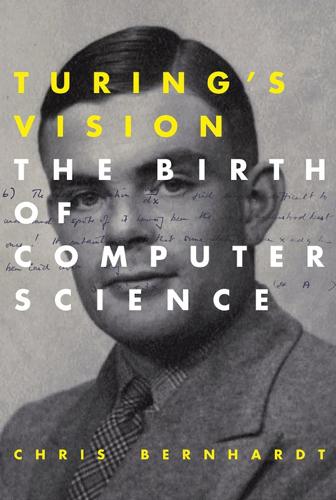
Turing's Vision: The Birth of Computer Science
by
Chris Bernhardt
Published 12 May 2016
Quantum Computing since Democritus by Aaranson, The Beginning of Infinity: Explanations That Transform the World by Deutsch, and Gödel, Escher, Bach by Hofstadter are all fascinating. Cellular automata We only looked briefly looked at cellular automata, but they have a long and interesting history. They were first studied by Ulam and von Neumann as the first computers were built. Nils Barricelli was at Princeton during the 1950s and used the computer to simulate the interaction of cells. George Dyson’s Turing’s Cathedral gives a good historical description of this work John Conway, in 1970, defined Life involving two-dimensional cellular automata. These were popularized by Martin Gardner in Scientific American.
…
In this chapter we pause to examine at three of these. We begin with the lambda calculus (λ-calculus) of Alonzo Church, then look at an example of a tag system, finally we consider cellular automata. These views of computation seem very different, but each perspective has its own strengths. The λ-calculus leads to programming languages; tag systems are useful for proving different systems equivalent; cellular automata give pictures of complete computations. After this brief detour we return to Turing’s arguments. Chapter 6 Up until now, machines have been described by diagrams. This chapter starts by showing how finite automata and Turing machines can be described by finite sequences of digits, called encodings.
…
Tag systems are easy to describe, but despite their simplicity, they are able to do any computation. Their simplicity is often useful in proving the equivalence of computational systems. For example, the proof that cellular automata can do anything that Turing machines can do involves emulating Turing machines by tag systems. The final topic is the study one-dimensional cellular automata. These are interesting because they yield two-dimensional pictures that show the entire computation. From these pictures it is possible to make conjectures about the computational power of the underlying rules. Each of these three topics is independent of the others, and so they can be read in any order.
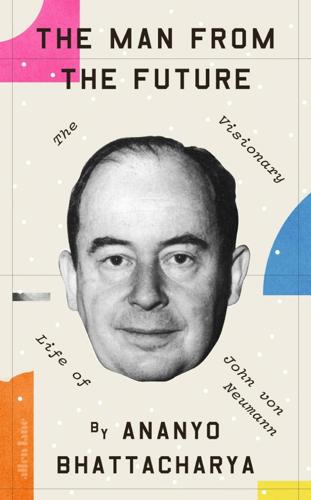
The Man From the Future: The Visionary Life of John Von Neumann
by
Ananyo Bhattacharya
Published 6 Oct 2021
Wilson notes, ‘no termite need serve as overseer with blueprint in hand’.32 The Michigan group would run some of the first computer simulations of automata in the 1960s, and many off-shoots of automata theory would trace their origins here.33 One of the first in a stream of visionaries to pass through the doors of the group was Tommaso Toffoli, who started a graduate thesis on cellular automata there in 1975. Toffoli was convinced there was a deep link between automata and the physical world. ‘Von Neumann himself devised cellular automata to make a reductionistic point about the plausibility of life being possible in a world with very simple primitives,’ Toffoli explained. ‘But even von Neumann, who was a quantum physicist, neglected completely the connections with physics – that a cellular automata could be a model of fundamental physics.’34 Perhaps, Toffoli conjectured, the complex laws of physics might be rewritten more simply in terms of automata.
…
Fredkin offered Toffoli a job at his new Information Mechanics Group. Toffoli accepted. The MIT group rapidly became the new nerve centre of automata studies. One of Toffoli’s contributions to the field would be to design, with computer scientist Norman Margolus, a computer specifically to run cellular automata programs faster than even the supercomputers of the time. The Cellular Automata Machine (CAM) would help researchers ride the wave of interest triggered by Conway’s Life. Complex patterns blossomed and faded in front of their eyes as the CAM whizzed through simulations, speeding discoveries they might have missed with their ponderous chuntering lab machines.
…
Wolfram invented a numbering convention so that all eight rules governing an automaton’s behaviour could be captured in a single number, from 0 to 255. Converting the decimal number to binary gives an eight-digit number that reveals whether the middle cell of each trio will be a ‘1’ or a ‘0’ next. Wolfram’s numbering convention for his elementary cellular automata. Wolfram systematically studied all 256 different sets of rules available to his elementary cellular automata, sorting them carefully into groups like a mathematical zoologist. Some of the rule sets produced very boring results. Rule 255 maps all eight configurations onto live cells, resulting in a dark screen; Rule 0 condemns all cells to death, producing a blank screen.

The Singularity Is Near: When Humans Transcend Biology
by
Ray Kurzweil
Published 14 Jul 2005
However, expressing continuous formulas in this way is an inherent complication and would violate Einstein's dictum to express things "as simply as possible, but no simpler." So the real question is whether we can express the basic relationships that we are aware of in more elegant terms, using cellular-automata algorithms. One test of a new theory of physics is whether it is capable of making verifiable predictions. In at least one important way, that might be a difficult challenge for a cellular automata-based theory because lack of predictability is one of the fundamental features of cellular automata. Wolfram starts by describing the universe as a large network of nodes. The nodes do not exist in "space," but rather space, as we perceive it, is an illusion created by the smooth transition of phenomena through the network of nodes.
…
I don't have in hand, but I know he's there....What I see is so compelling that it can't be a creature of my imagination.62 In commenting on Fredkin's theory of digital physics, Wright writes, Fredkin ... is talking about an interesting characteristic of some computer programs, including many cellular automata: there is no shortcut to finding out what they will lead to. This, indeed, is a basic difference between the "analytical" approach associated with traditional mathematics, including differential equations, and the "computational" approach associated with algorithms. You can predict a future state of a system susceptible to the analytic approach without figuring out what states it will occupy between now and then, but in the case of many cellular automata, you must go through all the intermediate states to find out what the end will be like: there is no way to know the future except to watch it unfold....Fredkin explains: "There is no way to know the answer to some question any faster than what's going on. "...
…
It sounds like a good-news/bad-news joke: the good news is that our lives have purpose; the bas news is that their purpose is to help some remote hacker estimate pi to nine jillion decimal places. 63 Fredkin went on to show that although energy is needed for information storage and retrieval, we can arbitrarily reduce the energy required to perform any particular example of information processing. and that this operation has no lower limit.64 That implies that information rather than matter and energy may be regarded as the more fundamental reality.65 I will return to Fredkin's insight regarding the extreme lower limit of energy required for computation and communication in chapter 3, since it pertains to the ultimate power of intelligence in the universe. Wolfram builds his theory primarily on a single, unified insight. The discovery that has so excited Wolfram is a simple rule he calls cellular automata rules 110 and its behavior. (There are some other interesting automata rules, but rule 110 makes the point well enough.) Most of Wolfram's analyses deal with the simplest possible cellular automata, specifically those that involve just a one-dimensional line of cells, two possible colors (black and white), and rules based only on the two immediately adjacent cells. For each transformation, the color of a cell depends only on its own previous color and that of the cell on the left and the cell on the right.

The Deep Learning Revolution (The MIT Press)
by
Terrence J. Sejnowski
Published 27 Sep 2018
Is there an even simpler system that exhibits a complexity that is easier to analyze? Cellular Automata Another colorful character with a scientifically serious approach to complexity, Stephen Wolfram (figure 13.1) was a wunderkind, the youngest person ever to earn a doctorate in physics from Caltech at the age of 20, and the founder of the Center for Complex Systems Research at the University of Illinois in 1986. Wolfram thought that neural networks were too complex and decided instead to explore cellular automata. The Age of Algorithms 197 Figure 13.1 Stephen Wolfram at his home in Concord, Massachusetts, standing on an algorithmically generated floor.
…
The Age of Algorithms 197 Figure 13.1 Stephen Wolfram at his home in Concord, Massachusetts, standing on an algorithmically generated floor. Wolfram was a pioneer in complexity theory and showed that even simple programs can give rise to the complexities of the kind we encounter in the world. Courtesy of Stephen Wolfram. Cellular automata typically have only a few discrete values that evolve in time, depending on the states of the other cells. One of the simplest cellular automata is a one-dimensional array of cells, each with value of 0 or 1 (box 13.1). Perhaps the most famous cellular automaton is called the “Game of Life,” which was invented by John Conway, the John von Neumann professor of mathematics at Princeton, in 1968, popularized by Martin Gardner in his “Mathematical Games” column in Scientific American, and is illustrated in figure 13.2.
…
How common are rules that generate complexity? Wolfram wanted to know the simplest cellular automata rule that could lead to complex behaviors and so he set out to search through all of them. Rules 0 to 29 produced patterns that would always revert to boring behaviors: all the cells would end up in a repeating pattern or some nested fractal pattern. But rule 30 produced unfolding patterns and rule 110 dazzled with continually evolving complex patterns (box 13.1).8 It was eventually proved that rule 110 was capable of universal computation; that is, some of the simplest of all possible cellular automata have the power of a Turing machine that can compute any computable function, so it is in principle as powerful as any computer.

The Singularity Is Nearer: When We Merge with AI
by
Ray Kurzweil
Published 25 Jun 2024
BACK TO NOTE REFERENCE 17 For deeper explanations and demonstrations of cellular automata, see Daniel Shiffman, “Cellular Automata,” chap. 7 in The Nature of Code (Magic Book Project, 2012), https://natureofcode.com/book/chapter-7-cellular-automata; Devin Acker, “Elementary Cellular Automaton,” Github.io, accessed March 10, 2023, http://devinacker.github.io/celldemo; Francesco Berto and Jacopo Tagliabue, “Cellular Automata,” in Stanford Encyclopedia of Philosophy, ed. Edward N. Zalta (Fall 2017), https://plato.stanford.edu/archives/fall2017/entries/cellular-automata. BACK TO NOTE REFERENCE 18 “John Conway’s Game of Life,” Bitstorm.org, accessed March 10, 2023, https://bitstorm.org/gameoflife; “Life in Life,” Phillip Bradbury, YouTube video, May 13, 2012, https://www.youtube.com/watch?
…
In his 2002 book A New Kind of Science, Wolfram sheds light on phenomena that have both deterministic and nondeterministic properties—mathematical objects called cellular automata.[18] Cellular automata are simple models represented by “cells” that alternate between states (e.g., black or white, dead or alive) based on one of many possible sets of rules. These rules specify how each cell will behave based on the states of nearby cells. This process unfolds over a series of discrete steps and can produce highly complex behavior. One of the most famous examples of cellular automata is called Conway’s Game of Life and uses a two-dimensional grid.[19] Hobbyists and mathematicians have found numerous interesting shapes that form predictably evolving patterns according to the rules of Life.
…
BACK TO NOTE REFERENCE 22 Wolfram, New Kind of Science, 23–27, 31, wolframscience.com/nks. BACK TO NOTE REFERENCE 23 Wolfram, New Kind of Science, 23–27, 31, wolframscience.com/nks. BACK TO NOTE REFERENCE 24 For Wolfram’s foundational paper on cellular automata and complexity, see Stephen Wolfram, “Cellular Automata as Models of Complexity,” Nature 311, no. 5985 (October 1984), https://www.stephenwolfram.com/publications/academic/cellular-automata-models-complexity.pdf. BACK TO NOTE REFERENCE 25 For a quick explainer on emergence, see Emily Driscoll and Lottie Kingslake, “What Is Emergence?,” Quanta Magazine, YouTube video, December 20, 2018, https://www.youtube.com/watch?
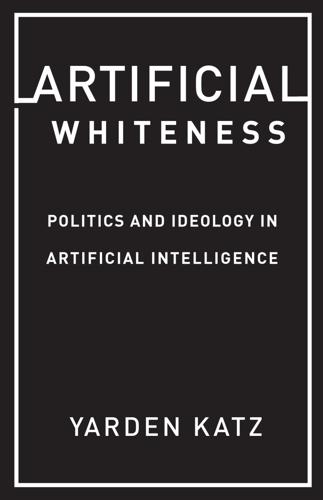
Artificial Whiteness
by
Yarden Katz
This line of inquiry became identified with certain formal frameworks, such as cellular automata and genetic programming, which aimed to capture in silico the essential aspects of biological evolution. Various commentators saw these bio-inspired computing frameworks as alternatives to the conventional digital and sequential modes of computing that have long served military aims and capitalist production. Media theorist Tiziana Terranova, for one, saw political promise in biological computing frameworks such as cellular automata. Biological computing of this sort, Terranova argued, is a promising attempt to “hack the social at its most fluid and least stratified, wherever it escapes the constrictions of rigid forms of organization but also of identity and class.”59 In narrating the history of British cybernetics, historian Andrew Pickering was even more optimistic about decentralized and bio-inspired frameworks such as cellular automata, arguing they provide “nonmodern ontology” and sharp counter to ordinary science.
…
Stefan Helmreich has insightfully explored the imagery of colonization (and the biblical creation stories that often come along with it) in the work of artificial life researchers. See Helmreich, 92–96, 113–22. 13. Quoted in David F. Noble, The Religion of Technology: The Divinity of Man and the Spirit of Invention (New York: Knopf, 1997), 171. The context was Rucker’s call for more to enlist in the study of cellular automata and help realize this “manifest destiny.” See Rudy Rucker, “Cellular Automata,” in Seek! Selected Nonfiction (Philadelphia: Running Press, 1999), 64–84. 14. Helmreich notes that “genetic difference, coded here [in a computing system called PolyWorld that uses genetic algorithms], is to be handled carefully, with populations kept pure of contamination from others.
…
Tiziana Terranova, Network Culture: Cultural Politics for the Information Age (London: Pluto Press, 2004), 130. 60. Andrew Pickering has argued that frameworks such as cellular automata (and the ways of thinking he associates with them) offer a “nonmodern ontology” and a radically different paradigm from that of modern scientific practice (as exemplified by fields like physics). He argues for the inclusion of courses on decentralized computing and robotics (e.g., cellular automata and robotics as practiced by Rodney Brooks). He writes that he “would be prepared to argue for one such course as a requirement [at universities] for all freshmen, whatever their field.”

In Our Own Image: Savior or Destroyer? The History and Future of Artificial Intelligence
by
George Zarkadakis
Published 7 Mar 2016
It looks as if nature is a lover of extreme sports. It adores pushing everything that is precious to the point of breaking up. This deeper link between the emergence of complex behaviour at criticality and recursive computations has also been demonstrated in digital computers using cellular automata, another great invention by John von Neumann. Cellular automata are patterns of 0s and 1s that evolve step-by-step according to a simple set of rules. A new pattern, or ‘generation’, of a cellular automaton emerges after each step. Points on the new patterns will be either 0 or 1 depending on their current value as well as the value of their neighbours.
…
It is the interpretation of this connection that polarises empiricists and idealists. Perhaps the discovery of Rule 110 is one giant step towards the discovery of a general, mathematical, law for life. There are too many things about cellular automata that make them profoundly similar to physical, living, things. By operating near the edge of chaos, cellular automata evolve with time by responding to their changing environment. They look like a form of ‘artificial life’ existing in the computer that runs the calculations that make and sustain it. Could this artificial life evolve to the point of becoming conscious?
…
We do not yet know whether this attraction is governed by a general law for biology. However, we have discovered something that seems to point towards such a law: Rule 110, a recursive algorithm that is Turing complete and lifelike – and there might be more.23 This profound correlation between cellular automata and biological phenomena suggests that life is governed by recursive computations, probably similar – or identical – to cellular automata. There is one more special feature of complex computations that is worth noting. They are fractal-like and scale-invariant. This means that they repeat themselves at every scale. From microscopic organisms to weather systems and the formation of galactic clusters nature creates similar patterns of organisation and behaviour.
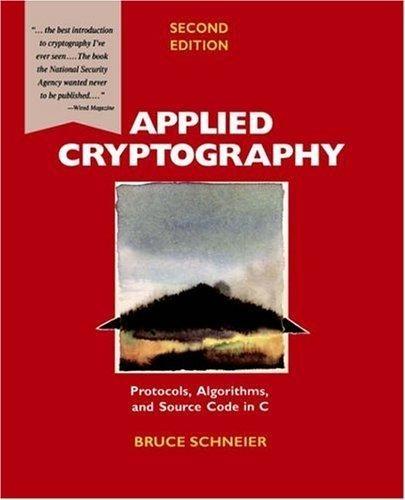
Applied Cryptography: Protocols, Algorithms, and Source Code in C
by
Bruce Schneier
Published 10 Nov 1993
Author(s): Bruce Schneier ISBN: 0471128457 Publication Date: 01/01/96 Search this book: Go! Previous Table of Contents Next ----------- 20.7 Cellular Automata A new and novel idea, studied by Papua Guam [665], is the use of cellular automata in public-key cryptosystems. This system is still far too new and has not been studied extensively, but a preliminary examination suggests that it may have a cryptographic weakness similar to one seen in other cases [562]. Still, this is a promising area of research. Cellular automata have the property that, even if they are invertible, it is impossible to calculate the predecessor of an arbitrary state by reversing the rule for finding the successor.
…
Then, improve the key scheduling by adding constants to the round keys to remove the bias. He’s not going to do it; he designed 3-Way instead (see Section 14.5). 13.11 CA-1.1 CA is a block cipher built on cellular automata, designed by Howard Gutowitz [677, 678, 679]. It encrypts plaintext in 384-bit blocks and has a 1088-bit key (it’s really two keys, a 1024-bit key and a 64-bit key). Because of the nature of cellular automata, the algorithm is most efficient when implemented in massively parallel integrated circuits. CA-1.1 uses both reversible and irreversible cellular automaton rules. Under a reversible rule, each state of the lattice comes from a unique predecessor state, while under an irreversible rule, each state can have many predecessor states.
…
Ivan Damgård designed a one-way hash function based on the knapsack problem (see Section 19.2) [414]; it can be broken in about 232 operations [290, 1232, 787]. Steve Wolfram’s cellular automata [1608] have been proposed as a basis for one-way hash functions. An early implementation [414] is insecure [1052, 404]. Another one-way hash function, Cellhash [384,404], and an improved version, Subhash [384,402, 405], are based on cellular automata; both are designed for hardware. Boognish mixes the design principles of Cellhash with those of MD4 [402, 407]. StepRightUp can be implemented as a hash function as well [402].

Turing's Cathedral
by
George Dyson
Published 6 Mar 2012
Data were handled the way ships are moved through locks in a canal. “We enjoyed some interesting speculative discussions with von Neumann at this time about information propagation and switching among hypothetical arrays of cells,” remembers Bigelow, “and I believe that some germs of his later cellular automata studies may have originated here.”20 “We did not move information from one place to another except in a positive way,” emphasizes James Pomerene. “That is used absolutely universally now. I think we were the first to do it. And I regret that we didn’t patent it.” Patentable inventions were being generated right and left.
…
“My incredible luck,” he bragged to von Neumann from Los Alamos in February 1952, “was evident in poker (8 successive + earnings) this year.”70 Four of the twentieth century’s most imaginative ideas for leveraging our intelligence—the Monte Carlo method, the Teller-Ulam invention, self-reproducing cellular automata, and nuclear pulse propulsion—originated with help from Stan. Three of the four proved to be wildly successful, and the fourth was abandoned before it had a chance. Monte Carlo was the realization, through digital computing, of what Maxwell could only imagine: a way to actually follow the behavior of a physical system at its elemental levels, as “if our faculties and instruments were so sharpened that we could detect and lay hold of each molecule and trace it through all its course.”71 The Teller-Ulam invention invoked a form of Maxwell’s demon to heat a compartment to a temperature hotter than the sun by letting a burst of radiation in, and then, for an equilibrium-defying instant, not letting radiation out.
…
Monte Carlo was the realization, through digital computing, of what Maxwell could only imagine: a way to actually follow the behavior of a physical system at its elemental levels, as “if our faculties and instruments were so sharpened that we could detect and lay hold of each molecule and trace it through all its course.”71 The Teller-Ulam invention invoked a form of Maxwell’s demon to heat a compartment to a temperature hotter than the sun by letting a burst of radiation in, and then, for an equilibrium-defying instant, not letting radiation out. Ulam’s self-reproducing cellular automata—patterns of information persisting across time—evolve by letting order in but not letting order out. When Nicholas Metropolis and Stanley Frankel began coding the first bomb calculations for the ENIAC, there was room for only a one-dimensional universe—represented by a single line, in our universe, extending outward from the center of the bomb.
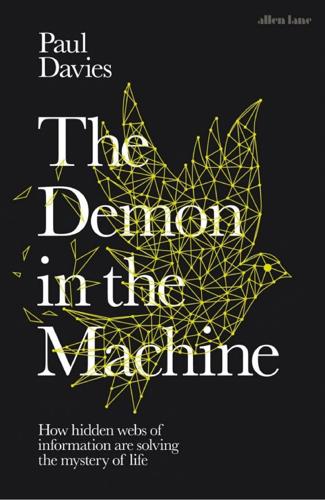
The Demon in the Machine: How Hidden Webs of Information Are Finally Solving the Mystery of Life
by
Paul Davies
Published 31 Jan 2019
The best-known example of a CA is called, appropriately enough, the Game of Life, invented by the mathematician John Conway and played on a computer screen. I need to stress that the Game of Life is very far removed from real biology, and the word ‘cell’ in cellular automata is not intended to have any connection with living cells – that’s just an unfortunate terminological coincidence. (A prison cell is a closer analogy.) The reason for studying cellular automata is because, in spite of their tenuous link with biology, they capture something deep about the logic of life. Simple it might be, but the Game embeds some amazing and far-reaching properties. Small wonder then that it has something of a cult following; people like playing it, even setting it to music, mathematicians enjoy exploring its arcane properties, and biologists mine it for clues about what makes life tick at the most basic level of its organizational architecture.
…
Though it is tempting to think of the shapes in the Game of Life as ‘things’ with some sort of independent existence obeying certain rules, there remains a deep question: in what sense can it be said that the collision of two shapes ‘causes’ the appearance of another? Joseph Lizier and Mikhail Prokopenko at the University of Sydney tried to tease out the difference between mere correlation and physical causation by performing a careful analysis of cellular automata, including the Game of Life.7 They treated information flowing through a system as analogous to injecting dye into a river and searching for it downstream. Where the dye goes is ‘causally affected’ by what happens at the injection point. Or, to use a different image, if A has a causal effect on B, it means that (metaphorically speaking) wiggling A makes B wiggle too, a little later.
…
However, these are merely worked-out examples, and the field is still the subject of lively investigation. Nobody yet knows the minimal complexity needed for a CA computer model of a von Neumann machine, still less that for a physical UC made of molecules. Recently, my colleagues Alyssa Adams and Sara Walker introduced a novel twist into the theory of cellular automata. Unlike the Game of Life, which plays out its drama across a two-dimensional array of cells, Adams and Walker used a one-dimensional row of cells. As before, cells may be filled or empty. You start with an arbitrary pattern of filled squares and evolve one step at a time using an update rule – an example is shown in Fig. 9.

Rage Inside the Machine: The Prejudice of Algorithms, and How to Stop the Internet Making Bigots of Us All
by
Robert Elliott Smith
Published 26 Jun 2019
Inspired by Turing’s papers on computation, von Neumann also came up with the modern conception of Babbage’s ‘store’ and ‘mill’ computer structure, in what is now called the ‘von Neumann architecture’, the architecture at the heart of almost all modern computers. Amongst this world-changing productivity, von Neumann also speculated about how computer programs, like genetic organisms, might be able to self-replicate. His ‘cellular automata’ theory closely parallels the actual replication methods of biological DNA, despite the fact that von Neumann’s work was done in advance of the actual structure of DNA being discovered by Watson and Crick in 1953.7 At the same time, statistician George Box suggested ‘evolutionary operations’8 as a methodology for optimizing industrial processes in the late 1950s, though he never implemented the procedure as a computer algorithm, and there are a number of other scientists who also struck close to the ideas that would eventually emerge as evolutionary computation.
…
So the evolutionary metaphor for computational algorithms was a firmly set context from the very start of computation, but it wasn’t until the late 1960s that the foundational idea of evolutionary algorithms really began to gain traction in various research centres around the world.9 In Germany, a group led by Ingo Rechenberg developed a kind of optimization algorithm called ‘evolutionsstrategies’.10 On the West Coast of the US, a group led by Lawrence Fogel developed another called ‘evolutionary programming’.11 And, at the University of Michigan, John Holland pioneered another form called ‘genetic algorithms’.12 Of all of these researchers, it is John Holland who has the most direct connection with Von Neumann’s early theories, since his PhD supervisor was Arthur Burks,13 who worked on the ENIAC engineering team and extended von Neumann’s work on ‘cellular automata’.14 Furthermore, Holland was granted the first PhD in computer science and went on to teach at the University of Michigan where he advised many students on PhDs that involved evolutionary computation, including my own PhD supervisor, David Goldberg. Goldberg wrote the first textbook on genetic algorithms while I was a part of his research group in 1989.
…
These models and algorithms seem to imply that, to be effective, evolution requires a balance between the discipline of using the best-known idea and the chaos of mixing ideas up. Other scientific studies also show that striking a precise balance between the two may be the vital characteristic of living systems. The term edge of chaos was first used by the SFI researchers Doyne Farmer and Chris Langton, while looking at cellular automata models, simplified algorithms invented by John von Neumann to represent self-replicating biology.4 While experimenting with parameters that controlled these programs, they observed that for some parameter settings, the algorithms would settle into uninteresting equilibria, essentially static states.
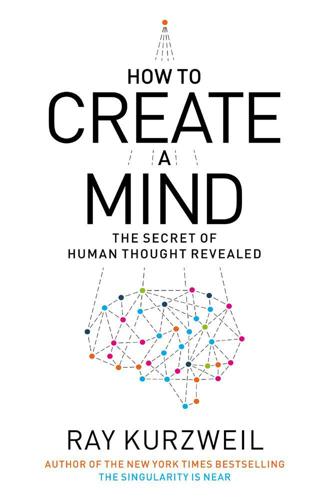
How to Create a Mind: The Secret of Human Thought Revealed
by
Ray Kurzweil
Published 13 Nov 2012
Wolfram proposes a way to resolve the dilemma. His book A New Kind of Science (2002) presents a comprehensive view of the idea of cellular automata and their role in every facet of our lives. A cellular automaton is a mechanism in which the value of information cells is continually recomputed as a function of the cells near it. John von Neumann created a theoretical self-replicating machine called a universal constructor that was perhaps the first cellular automaton. Dr. Wolfram illustrates his thesis with the simplest possible cellular automata, a group of cells in a one-dimensional line. At each point in time, each cell can have one of two values: black or white.
…
If there is a satellite orbiting Earth, we can predict where it will be five years from now without having to run through each moment of a simulated process by using the relevant laws of gravity and solve where it will be at points in time far in the future. But the future state of class IV cellular automata cannot be predicted without simulating every step along the way. If the universe is a giant cellular automaton, as Dr. Wolfram postulates, there would be no computer big enough—since every computer would be a subset of the universe—that could run such a simulation. Therefore the future state of the universe is completely unknowable even though it is deterministic.
…
(film), 210 Aiken, Howard, 189 Alexander, Richard D., 224 algorithms, intelligent, 6–7 Allen, Paul, 266–72 Allman, John M., 179 Alzheimer’s disease, 102 amygdala, 71, 77, 106–8, 109 analog processing, digital emulation of, 194–95, 274 Analytical Engine, 189–90 anesthesia awareness, 206 animal behavior, evolution of, 122 apical dendrites, 110 aptitude, 111–12 artificial intelligence (AI), 7, 37–38, 50, 265, 280 Allen on, 270–71 biological models for, 273 chess playing and, 6, 38–39, 165–66, 257 conversation and, 168–69 as extension of neocortex, 172, 276 knowledge bases and, 4, 6–7, 170–71, 246, 247 language and speech processing in, 72–73, 92, 115–16, 122–23, 128, 135–41, 142–46, 145, 149–50, 152–53, 156, 157–72 medicine and, 6–7, 39, 108, 156, 160–61, 168 omnipresence of, 158 optimization of pattern recognition in, 112 sparse coding in, 95–96 see also neocortex, digital Audience, Inc., 96–97, 98 auditory association, 77 auditory cortex, 7, 77, 97, 128 auditory information processing, 96–97, 97 auditory nerve, 97, 128 data reduction in, 138 auditory pathway, 97 autoassociation, 59–61, 133, 173 automobiles, self-driving, 7, 159, 261, 274 axons, 36, 42, 43, 66, 67, 90, 100, 113, 150, 173 as digital processors, 191 Babbage, Charles, 189–90 Bainbridge, David, 179 bandwidth, of Internet, 254 basis functions, 103–4 Bedny, Marina, 87 Bell System Technical Journal, 184 Berger, Theodore, 102 Berners-Lee, Tim, 172 Bernoulli’s principle, 5, 8 Better Angels of Our Nature: Why Violence Has Declined (Pinker), 27 Bierce, Ambrose, 66 BINAC, 189 Bing, 171 biology, 37 DNA as unifying theory of, 17 reverse-engineering of, 4–5 biomedicine, LOAR and, 251, 252, 253 Blackmore, Susan, 211 Blade Runner (film), 210 Blakeslee, Sandra, 73, 156 Blue Brain Project, 63, 80, 124–28, 125 Bombe, 187 Bostrom, Nick, 129–30, 222 Boyden, Ed, 126 brain, evolution of, 2 brain, human: analog computing in, 274 complexity of, 8–9, 181, 272 digital implants in, 243–44 digital neocortex as extension of, 172, 276 hemispheres of, 77, 224–49 LOAR as applied to, 261–63, 263, 264, 265 prediction by, 250 redundancy of, 9 reverse-engineering of, see brain, human, computer emulation of; neocortex, digital structure of, 77 brain, human, computer emulation of, 5, 7, 179–98, 273, 280 invariance and, 197 memory requirements of, 196–97 parallel processing in, 197 processing speed in, 195–96 redundancy in, 197 singularity and, 194 Turing test and, 159–60, 169, 170, 178, 191, 213, 214, 233, 276, 298n von Neumann on, 191–95 see also neocortex, digital brain, mammalian: hierarchical thinking as unique to, 2–3, 35 neocortex in, 78, 93, 286n brain plasticity, 79, 87–89, 91, 182, 193, 197, 225, 280 as evidence of universal neocortical processing, 86, 88, 152 limitations on, 88–89 brain scanning, 7, 263, 308n destructive, 264, 265, 309n–11n LOAR and, 262–63, 263, 264, 265 nondestructive, 127, 129, 264, 312n–13n noninvasive, 273 Venn diagram of, 262 brain simulations, 124–31, 262 brain stem, 36, 99 Bremermann, Hans, 316n Britain, Battle of, 187 Brodsky, Joseph, 199 Burns, Eric A., 113 busy beaver problem, 207 Butler, Samuel, 62, 199–200, 224, 248–49 Byron, Ada, Countess of Lovelace, 190, 191 California, University of, at Berkeley, 88 “CALO” project, 162 carbon atoms, information structures based on, 2 Carroll, Lewis, 109 cells, replacement of, 245, 246 cellular automata, 236–39 cerebellum, 7, 77, 103–4 uniform structure of, 103 cerebral cortex, 7–8 see also neocortex Chalmers, David, 201–2, 218, 241 “chatbots,” 161 chemistry, 37 chess, AI systems and, 6, 38–39, 165–66, 257 chimpanzees: language and, 3, 41 tool use by, 41 “Chinese room” thought experiment, 170, 274–75 Chomsky, Noam, 56, 158 Church, Alonzo, 186 Church-Turing thesis, 186 civil rights, 278 cloud computing, 116–17, 123, 246, 279–80 cochlea, 96, 97, 135, 138 cochlear implants, 243 Cockburn, David, 214 Cold Spring Harbor Laboratory, 129 Colossus, 187, 188 “common sense,” 40 communication, reliability of, 182–85, 190 communication technology, LOAR and, 253, 254 compatibilism, 234 complexity, 198, 233 of human brain, 8–9, 181, 272 modeling and, 37–38 true vs. apparent, 10–11 computation: price/performance of, 4–5, 250–51, 257, 257, 267–68, 301n–3n thinking compared with to, 26–27 universality of, 26, 181–82, 185, 188, 192, 207 Computer and the Brain, The (von Neumann), 191 computers: brain emulated by, see brain, human, computer emulation of consciousness and, 209–11, 213–15, 223 intelligent algorithms employed by, 6–7 knowledge base expanded by, 4, 246, 247 logic gates in, 185 memory in, 185, 259, 260, 268, 301n–3n, 306n–7n reliability of communication by, 182–85, 190 see also neocortex, digital “Computing Machinery and Intelligence” (Turing), 191 conditionals, 65, 69, 153, 189, 190 confabulation, 70, 217, 227, 228, 229 connectionism, 133, 191 “connectome,” 262 consciousness, 11, 199–209 cerebral hemispheres and, 226–29 computers and, 209–11, 213–15, 223, 233 Descartes on, 221–22 dualist views of, 202–3 Eastern vs.
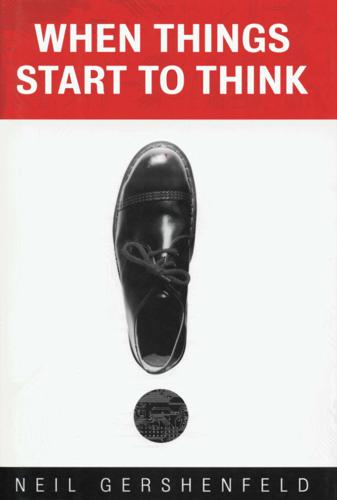
When Things Start to Think
by
Neil A. Gershenfeld
Published 15 Feb 1999
Like the checkers on a checkerboard, tokens that each represent a collection of molecules get moved among sites based on how the neighboring sites are occupied. This idea has come to be known as Cellular Automata (CAs). From the 1970s onward, the group of Ed Fredkin, Tomaso Toffoli, and Norm Margolus at MIT started to make special-purpose computers designed for CAs. Because these machines entirely dispense with approximations of continuous functions, they can be much simpler and faster. And because a Turing machine can be described this way, a CA can do anything that can be done with a conventional computer. A cellular automata model of the universe is no less fundamental than one based on calculus. It's a much more natural description if a computer instead of a pencil is used to work with the model.
…
Index adding machine, Pascal's, 131-32 Adelson, Ted, 180-81 affective states, computer's perception of, 53-54 agents, 107, 109, 116-17 airbag, smart, 170-71, 180 analog circuits, 165, 166 Analytical Engine, 125 Any Thing project, 70, 71, 73 Apple Macintosh, 139 Argonne National Laboratory, 158 ARPANET, 79 artificial intelligence, 108, 128, 129-30, 135, 201 sensory perception and, 135, 201 assembly line, 180 AT&T, 158, 203 autonomy and wearable computers, 57-58 Babbage, Charles, 124-27, 132 Barings Bank, 77, 86 bassoon, 29-32 Begin Again Again, 34 Bell Labs, 36, 162, 174 Bender, Walter, 202-3 Benioff, Paul, 158 Bennett, Charles, 159, 176, 177 Benton, Steve, 14 2 Bill of Rights, 98-99 Bill of Things' Rights, 104 Bill of Things Users' Rights, 102 Birnbaum, Joel, 52 Bitnet, 89 "bit" of information, 176 "blessing of dimensionality," 164-65 Boltzmann, Ludwig, 175 books, printed, 13-25 competing technologies, 10, 13-25 dimensions of, 20 future of computing, lesson to be derived for, 14 Gutenberg and movable metal type, 18-19 as historical artifacts, 23-24 libraries and electronic book, 20-23 lighting for reading, 15 papal bull to require certification of, 96 paper for, 15 specifications of, 13-14 state of book business, 13 universal book, 18-20 Borden, David, 30-31 218 +INDEX Boyden, Edward, 196, 197 brain, 212 brain, human, 135, 163-64 Brain Opera, 206-7 Bretton Woods Agreement, 79 Bunka Fashion College, 55 Bush, Vannevar, 139,171-74,180 Buxton, Bill, 140 buzz words, technology, 107-21 CAD software, 73 calculus, 131, 132 Caltech, 158 carbonless copy paper, 15-16 card catalogs, 20-22 Carnegie Mellon, 129 CD-ROM, 10 as competitor of printed book, 13 cello: comparison of computer mouse to violin bow, 142-43 critical reaction to digital cello, 37-38 designing a smart, 27-44, 143-44, 187 limits of classic, 33, 37 Cellular Automata (CAs), 132-33 Census Bureau, 78 central planning, 88-89 chaos theory, 109, 112-16 chess-playing computer programs, 128-30, 134-35 children: learning methods of, 137-38 LOGO programming language, 138, 147 China, Internet access in, 99 Chuang, Isaac, 160-61 Chung, joe, 34 Citron, Robert, 78 Clarke, Arthur C., 51 Clausius, Rudolf, 175 clocks, 104 clothing and wearable computers, 50, 52,55-56,61,102-3,179 coffeemaker, intelligent, 201 communications: imposing on our lives, 95, 100-2 performance limit of a channel of, 176 privacy issues and, 100-1 regulation of, 99-100 see also specific forms of communication, e.g. e-mail; telephones Communications Act of 1934, 99 Communications Assistance for Law Enforcement Act (CALEA), 208 compact disc players, 4 Compumachine, 67 computer chips: entropy and, 177 future uses of, 152 lowering the cost of, 152-56 computers: affective states and, 53-54 Babbage's contribution in developing, 124-25, 132 battle of operating systems, 146 chips, see computer chips cost of, 4, 103 desktop, 5 difficulty using, 4, 7, 103 division of industry into software and hardware, 7 ease of use, 4, 7, 103 educational use of, 201 expectations from, 4 inability to anticipate your needs, 7-8 interfaces, see interfaces, computer irritation with, 199-200 laptop, see laptop computers mainframes, see mainframes minicomputers, 52, 138 Moore's law, 155-57, 163 music and, see musiC and computers parallel, 68, 157 PCs, see personal computers (PCs) peripherals, 52-53 INDEX+ pnvacy issue and, 56-57, 100-1 productivity and, 7 pyramid of information technology, 151 quantum, 157-63, 177 software, see software speed of, 7 standards, 88-90, 126 supercomputers, 151, 177, 199 unobtrusive computing, 44, 200, 211 upgrades, 98 wearable, see wearable computers "Computing Machinery and Intelligence," 128, 135 consciousness, quantum mechanics to describe human, 130-31 Constitution, U.S., 98-99 Copernicus, 113-14 copyrights, 181 Creapole, 55 credit cards: electronic commerce and, 80-81 privacy and use of, 100-1 reflective holograms on, 142 cryptography, 80-81, 156, 207-8 "curse of dimensionality," 164 Daiwa Bank, 77, 86 Darwin, Charles, 125 Data Glove, 49 "Deep Blue," 129-30 "Deep Thought," 129 Defense Advanced Research Projects Agency (DARPA), 79, 129 derivative~ 78, 85-86 Deutsch, David, 158 Deutsche Telekom, 203 developing countries, 210-11 Dickinson, Becton, 204 Difference Engine, 124-25, 132 digital evolution, 10 digital money, see smart money digital representation, effect of time and use on, 5-6 219 Digital Revolution: disturbance resulting from, 10 promise and reality of, 3, 5 disabled, wearable computers and, 58 discovery, the business of, 169-84 Disney, 203 distance learning, 19 3 distribution of wealth, 78 division of labor between people and machines, 8 DNA molecules, 157 Domus, 55 Doom (computer game), 89 Dynabook, 138 e-broidery, 55 Economist, 115 economy, electronic, 79 education: classroom, 188, 197 departmental organization of, 190-91 distance learning, 193 just-in-time, 192 local learning, 193 at Massachusetts Institute of Technology (MIT) Media Lab, 187-97 use of computers for, 201 Einstein's theory of relativity, 178 electronic books, 15-25, 38, 72 electronic commerce, 80-81, 152, 156 cryptography and, 80-81 paying-as-you-go, 82 electronic funds transfers, 80 electronic ink, 16, 17, 200 universal book and, 18-20 e-mail, 101-2, 104-6 encryption, 80-81 Engelhart, Doug, 139 English Bill of Rights, 98 entanglement, 159 entropy, 175, 176, 177, 188-90 "Entschedidungsproblem," 127 Equifax, 101 220 + Ernst, Richard R.
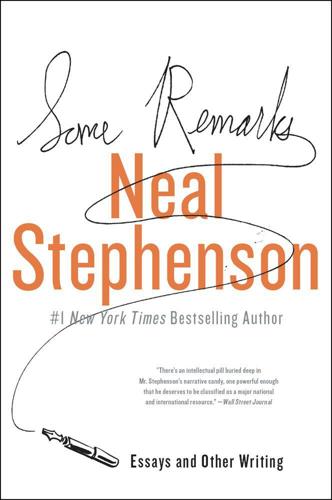
Some Remarks
by
Neal Stephenson
Published 6 Aug 2012
Combined with the monadic property of being able to perceive the states of all other monads, this comes close to being a mathematically formal definition of cellular automata, a branch of mathematics generally agreed to have been invented by Stanislaw Ulam and John von Neumann during the 1940s as an outgrowth of work at Los Alamos. The impressive capabilities of such systems have, in subsequent decades, drawn the attention of many luminaries from the worlds of mathematics and physics, some of whom have proposed that the physical universe might, in fact, consist of cellular automata carrying out a calculation—a hypothesis known as Digital Physics, or It from Bit. 4.
…
During Leibniz’s era, the only person who had thought seriously about such machines was Leibniz himself; building on earlier work by Blaise Pascal, he designed, and caused to be built, a mechanical computer, and envisioned coupling it to a formal logical system called the Characteristica Universalis. He invented binary arithmetic, and, according to no less an authority than Norbert Wiener, pioneered the idea of feedback. 3. In particular, the monads’ production rule scheme clearly presages the modern concept of cellular automata. Quoting from Mercer’s work: “The Production Rule of F is a rule for the continuous production of the discrete states of F so that it instructs F about exactly what to think at every moment of F’s existence. Following Leibniz’s suggestion, if F exists from t1 to tn and has a different thought at each moment of its existence, then at every moment, there will be an instruction about what to think next.
…
He’s making the argument that a lot of science doesn’t necessarily fit that mold: biological science, psychology. There are plenty of cases you can point to, even in mathematics, where being able to break things down into its smallest components doesn’t really get you anywhere. It doesn’t give you an explanation that’s really worth anything. If you look at cellular automata, for example: Sure, each automaton can be explained as a unit, but that’s not what’s interesting. What’s interesting is the really complicated emergent behaviors that you can get out of a whole bunch of these things acting at once. There’s really no grid to cross that gap. Yet we’re often led to believe that these things are better understood than they are.

The Blockchain Alternative: Rethinking Macroeconomic Policy and Economic Theory
by
Kariappa Bheemaiah
Published 26 Feb 2017
Emergence relates to the dynamic nature of interactions between components in a system (Gallegati and Kirman, 2012). The dynamic character of emergent phenomena is not a property of a pre-established, given whole - but arises and becomes apparent as a complex system evolves over time (Goldstein, 1999). Complexity in a system can arise, after all, from simple rules - this is seen in examples such as cellular automata, neural networks and genetic algorithms (Refer Notes). This is because of the non-linearity of the systems relations. As the system becomes complex, emergence manifests itself in the form of self- organization. In other words, no external forces are needed for the system to take on certain properties and traits and these systemic properties arise from far-from-equilibrium conditions (Morçöl, 2008).
…
Vector autoregression (VAR) models employ a small number of estimated equations to summarize the dynamic behaviour of the entire macroeconomy, with few restrictions from economic theory beyond the choice of variables to include in the model. Sims is the original proponent of this type of model. Cellular automata (CA) : “Automaton” (plural: “automata") is a technical term used in computer science and mathematics for a hypothetical machine that changes its internal state based on inputs and its previous state. (Sayama, 2015). A cellular automaton consists of a regular grid of cells, each in one of a finite number of states, such as on and off.
…
Buiter The Precariat: The New Dangerous Class (2011), Guy Standing Inventing the Future: Postcapitalism and a World Without Work (2015), Nick Srnicek and Alex Williams Raising the Floor: How a Universal Basic Income Can Renew Our Economy and Rebuild the American Dream (2016), Andy Stern Index A Aadhaar program Agent Based Computational Economics (ABCE) models complexity economists developments El Farol problem and minority games Kim-Markowitz Portfolio Insurers Model Santa Fe artificial stock market model Agent based modelling (ABM) aggregate behavioural trends axiomatisation, linearization and generalization black-boxing bottom-up approach challenge computational modelling paradigm conceptualizing, individual agents EBM enacting agent interaction environmental factors environment creation individual agent parameters and modelling decisions simulation designing specifying agent behaviour Alaska Anti-Money Laundering (AML) ARPANet Artificial Neural Networks (ANN) Atlantic model Automatic Speech Recognition (ASR) Autor-Levy-Murnane (ALM) B Bandits’ Club BankID system Basic Income Earth Network (BIEN) Bitnation Blockchain ARPANet break down points decentralized communication emails fiat currency functions Jiggery Pokery accounts malware protocols Satoshi skeleton keys smart contract TCP/IP protocol technological and financial innovation trade finance Blockchain-based regulatory framework (BRF) BlockVerify C Capitalism ALM hypotheses and SBTC Blockchain and CoCo canonical model cashlessenvironment See(Multiple currencies) categories classification definition of de-skilling process economic hypothesis education and training levels EMN fiat currency CBDC commercial banks debt-based money digital cash digital monetary framework fractional banking system framework ideas and methods non-bank private sector sovereign digital currency transition fiscal policy cashless environment central bank concept of control spending definition of exogenous and endogenous function fractional banking system Kelton, Stephanie near-zero interest rates policy instrument QE and QQE tendency ultra-low inflation helicopter drops business insider ceteris paribus Chatbots Chicago Plan comparative charts fractional banking keywords technology UBI higher-skilled workers ICT technology industry categories Jiggery Pokery accounts advantages bias information Blockchain CFTC digital environment Enron scandal limitations private/self-regulation public function regulatory framework tech-led firms lending and payments CAMELS evaluation consumers and SMEs cryptographic laws fundamental limitations governments ILP KYB process lending sector mobile banking payments industry regulatory pressures rehypothecation ripple protocol sectors share leveraging effect technology marketing money cashless system crime and taxation economy IRS money Seigniorage tax evasion markets and regulation market structure multiple currency mechanisms occupational categories ONET database policies economic landscape financialization monetary and fiscal policy money creation methods The Chicago Plan transformation probabilities regulation routine and non-routine routinization hypothesis Sarbanes-Oxley Act SBTC scalability issue skill-biased employment skills and technological advancement skills downgrading process trades See(Trade finance) UBI Alaska deployment Mincome, Canada Namibia Cashless system Cellular automata (CA) Central bank digital currency (CBDC) Centre for Economic Policy Research (CEPR) Chicago Plan Clearing House Interbank Payments System (CHIPS) Collateralised Debt Obligations (CDOs) Collateralized Loan Obligations (CLOs) Complexity economics agent challenges consequential decisions deterministic and axiomatized models dynamics education emergence exogenous and endogenous changes feedback loops information affects agents macroeconoic movements network science non-linearity path dependence power laws self-adapting individual agents technology andinvention See(Technology and invention) Walrasian approach Computing Congressional Research Service (CRS) Constant absolute risk aversion (CARA) Contingent convertible (CoCo) Credit Default Swaps (CDSs) CredyCo Cryptid Cryptographic law Currency mechanisms Current Account Switching System (CASS) D Data analysis techniques Debt and money broad and base money China’s productivity credit economic pressures export-led growth fractional banking See also((Fractional Reserve banking) GDP growth households junk bonds long-lasting effects private and public sectors problems pubilc and private level reaganomics real estate industry ripple effects security and ownership societal level UK DigID Digital trade documents (DOCS) Dodd-Frank Act Dynamic Stochastic General Equilibrium (DSGE) model E EBM SeeEquation based modelling (EBM) Economic entropy vs. economic equilibrium assemblages and adaptations complexity economics complexity theory DSGE based models EMH human uncertainty principle’ LHC machine-like system operating neuroscience findings reflexivity RET risk assessment scientific method technology and economy Economic flexibility Efficient markets hypothesis (EMH) eID system Electronic Discrete Variable Automatic Computer (EDVAC) Elliptical curve cryptography (ECC) EMH SeeEfficient Market Hypothesis (EMH) Equation based modelling (EBM) Equilibrium business-cycle models Equilibrium economic models contract theory contact incompleteness efficiency wages explicit contracts implicit contracts intellectual framework labor market flexibility menu cost risk sharing DSGE models Federal Reserve system implicit contracts macroeconomic models of business cycle NK models non-optimizing households principles RBC models RET ‘rigidity’ of wage and price change SIGE steady state equilibrium, economy structure Taylor rule FRB/US model Keynesian macroeconomic theory RBC models Romer’s analysis tests statistical models Estonian government European Migration Network (EMN) Exogenous and endogenous function Explicit contracts F Feedback loop Fiat currency CBDC commercial banks debt-based money digital cash digital monetary framework framework ideas and methods non-bank private sector sovereign digital currency transition Financialization de facto definition of eastern economic association enemy of my enemy is my friend FT slogans Palley, Thomas I.
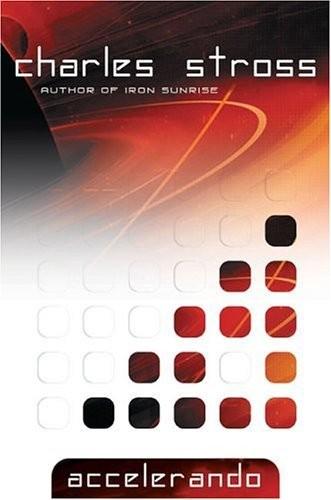
Accelerando
by
Stross, Charles
Published 22 Jan 2005
Annette squeezes him again, and he stiffens. "More!" By the time they finish, he's aching, and she shows him how to use the bidet. Everything is crystal clear, and her touch is electrifying. While she showers, he sits on the toilet seat lid and rants about Turing-completeness as an attribute of company law, about cellular automata and the blind knapsack problem, about his work on solving the Communist Central Planning problem using a network of interlocking unmanned companies. About the impending market adjustment in integrity, the sinister resurrection of the recording music industry, and the still-pressing need to dismantle Mars.
…
Each of these companies – and there are currently more than sixteen thousand of them, although the herd is growing day by day – has three directors and is the director of three other companies. Each of them executes a script in a functional language Manfred invented; the directors tell the company what to do, and the instructions include orders to pass instructions on to their children. In effect, they are a flock of cellular automata, like the cells in Conway's Game of Life, only far more complex and powerful. Manfred's companies form a programmable grid. Some of them are armed with capital in the form of patents Manfred filed, then delegated rather than passing on to one of the Free Foundations. Some of them are effectively nontrading, but occupy directorial roles.
…
He snarls irritably: "Give me some space!" He coughs, a threatening noise from the back of his wattled throat, "Searching the sail's memory now." The back of the soap-bubble-thin laser sail is saturated with tiny nanocomputers spaced micrometers apart. Equipped with light receptors and configured as cellular automata, they form a gigantic phased-array detector, a retina more than a hundred meters in diameter. Boris is feeding them patterns describing anything that differs from the unchanging starscape. Soon the memories will condense and return as visions of darkness in motion – the cold, dead attendants of an aborted sun.
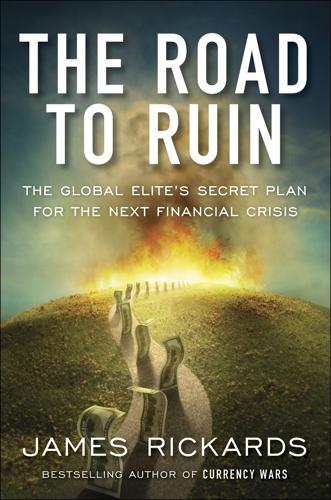
The Road to Ruin: The Global Elites' Secret Plan for the Next Financial Crisis
by
James Rickards
Published 15 Nov 2016
The Austrian understanding of the superiority of free markets over central planning is sound. Still, the Austrian school needs updating using new science and twenty-first-century technology. Christopher Columbus was the greatest dead-reckoning navigator ever. Yet no one disputes he would use GPS today. If Friedrich Hayek were alive, he would use new instruments, network theory, and cellular automata to refine his insights. His followers should do no less. Neo-Keynesian models are the reigning creed. Interestingly, they have little to do with John Maynard Keynes. He was above all a pragmatist; those who follow in his name are anything but. Keynes advocated for gold in 1914, counseled for a higher gold price in 1925, opposed gold in 1931, and offered a modified gold standard in 1944.
…
Predicting market crashes is like predicting earthquakes. One may be certain the event will occur, and can estimate its magnitude, yet one will never know exactly when. Laboratory science, in particular sand pile experiments (similar to a snowflake-avalanche dynamic) and computer simulations using cellular automata, reveal degree distributions of extreme events. Still, a million experiments will not let you predict which particular grain of sand causes a certain sand pile to collapse. Systemic instability, not an individual catalyst, destroys your wealth. Anxious investors should not focus on snowflakes, they should stay alert for an avalanche.
…
Schumpeter eschewed Keynesian models because of the artifice in holding most variables constant while monotonically isolating one as the “cause” of the phenomena under study. Today a twenty-first-century mélange of a Schumpeterian long view and massive computing power—unavailable to Schumpeter—allows for a rapid expansion of recursive functions and simulation of human action via cellular automata. Schumpeter would surely look benignly on such efforts as a reasonable simulacrum of his deep historical processes. Society stands on Schumpeter’s shoulders with new tools of complexity theory to look over a ridgeline at the rise of socialism and fascism, one and the same. The New Praetorians In ancient Rome, the Praetorian Guard were an elite military unit that provided personal protection to emperors.
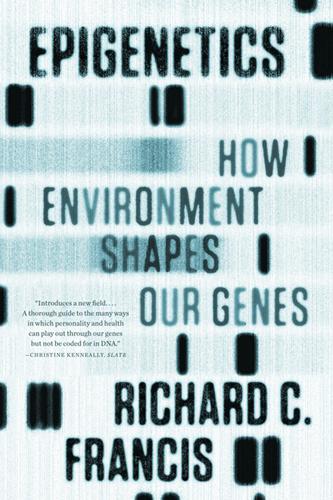
Epigenetics: How Environment Shapes Our Genes
by
Richard C. Francis
Published 14 May 2012
Therefore, it would be more apt to say that the genes are programmed by cellular interactions. There are other, very minimalist senses of “program” that have become popular in the fields of artificial intelligence and artificial life.26 On this minimalist notion of program, a program provides a few basic rules, and the robots or cellular automata take it from there through interactions with their neighbors and the rest of their environment. But the idea of a central director is gone. This minimalist sense of program looks a lot like epigenesis. So the preformationist notion of an epigenetic (or genetic) program is either false or too squishy to be distinguished from epigenesis.
…
Collas (2010) is typical in this regard, in the context of cellular differentiation. 26. For the minimalist notion of programming in situated robotics, see Hendriks-Jansen (1996). Wolfram (2002) is an expanded, semi-mystical view of the significance of a minimalist program, motivated by Wolfram’s research on cellular automata. 27. Passier and Mummery (2003). 28. Moreover, there are subtle differences between embryonic stem cells (ESCs) and induced embryonic stem cells (iPSCs) that are clinically relevant. For example, ESCs have proved much more efficient in promoting neuronal redifferentiation than iPSCs have (Tokumoto, Ogawa, et al. 2010). 29.

Radical Technologies: The Design of Everyday Life
by
Adam Greenfield
Published 29 May 2017
Von Neumann’s constructors existed in an entirely virtual universe of possibility. At the time he imagined them, there wasn’t enough computing power in the world to simulate their behavior, let alone physically realize them as anything other than painstakingly inked grids of pen on paper, so-called cellular automata.2 But with its implication of a continuously and geometrically expanding productivity, his vision of a universal constructor inspired generations of engineers. Sometime around the turn of the twenty-first century, one of them—a mechanical engineering professor at the University of Leeds named Adrian Bowyer, troubled by the thought of a world riven by material scarcity—finally took von Neumann at his word.
…
Casey Newton, “Seattle dive bar becomes first to ban Google Glass,” CNET, March 8, 2013. 23.Dan Wasserman, “Google Glass Rolls Out Diane von Furstenberg frames,” Mashable, June 23, 2014. 4Digital fabrication 1.John Von Neumann, Theory of Self-Reproducing Automata, Urbana: University of Illinois Press, 1966, cba.mit.edu/events/03.11.ASE/docs/VonNeumann.pdf. 2.You may be familiar with cellular automata from John Conway’s 1970 Game of Life, certainly the best-known instance of the class. See Bitstorm.org, “John Conway’s Game of Life,” undated, bitstorm.org. 3.Adrian Bowyer, “Wealth Without Money: The Background to the Bath Replicating Rapid Prototyper Project,” February 2, 2004, reprap.org/wiki/Wealth_Without_Money; RepRap Project, “Cost Reduction,” December 30, 2014, reprap.org/wiki/Cost_Reduction.
…
See Google Bowyer, Adrian, 86, 303, 306 Branch, startup, 246–7, 254 Brandes, Jeff, 256 Brantingham, Jeffrey, 231 Patricia, 232 Paul, 232 Braungart, Michael, 96 British Broadcasting Corporation, BBC, 177 Brown, Henry T., 103 Brown, Joshua, 223–4, 254 Brown, Michael, 231 “buddy punching,” 198 bullshit jobs, 203, 205 Bui, Quoctrung, 192–3 bushido, 266–7 Bushido Project, the, 266 Business Microscope, 197 Buterin, Vitalik, 147–50, 152, 154, 162–4, 167, 169, 172, 175, 177, 179, 303, 311 Byzantium, 69 CAD-Coin, 157 Californian Ideology, the, 283 Carmack, John, 82 cartography, 20 cats, 214 CCTV, 49–50, 54, 241 cellular automata, 86 Champs-Élysées, 1 Chaum, David, 121 Checkpoint Charlie, 70 chess, 263 Chevrolet Camaro, 216–18 Chicago Police Department, 230–1 China, 87, 102, 190, 194, 278–9, 286, 290, 306 Churchill, Winston, 28 circular economy, 92, 96, 99, 288 Ciutat Meridiana, Barcelona neighborhood, 109 climax community, 289 Cockney rhyming slang, 311 code library, 274–5 commons, the, 171–3 computer numerical control, CNC milling, 86, 93, 95, 97, 108, 110, 273 Container Store, 196 cooperatives, 171 cooperative motility, 80 Copenhagen, 31, 51 Cornell Law School, 151 Cortana virtual assistant, 39 Costco, 45 cozy catastrophe, 291 cradle-to-cradle industrial ecosystem.

From eternity to here: the quest for the ultimate theory of time
by
Sean M. Carroll
Published 15 Jan 2010
As a general rule, the more symmetries you have, the simpler things become. 110 This whole checkerboard-worlds idea sometimes goes by the name of cellular automata. A cellular automaton is just some discrete grid that follows a rule for determining the next row from the state of the previous row. They were first investigated in the 1960s, by John von Neumann, who is also the guy who figured out how entropy works in quantum mechanics. Cellular automata are fascinating for many reasons having little to do with the arrow of time; they can exhibit great complexity and can function as universal computers. See Poundstone (1984) or Shalizi (2009). Not only are we disrespecting cellular automata by pulling them out only to illustrate a few simple features of time reversal and information conservation, but we are also not speaking the usual language of cellular-automaton cognoscenti.
…
bosons bouncing-universe cosmology boundary conditions and cause and effect described and initial conditions of the universe and irreversibility and Maxwell’s Demon and recurrence theorem and time symmetry Bousso, Raphael Brahe, Tycho branes Brillouinéon brown dwarfs Brownian motion Bruno, Giordano bubbles of vacuum Buddhism Bureau of Longitude Callender, Craig Callisto caloric Calvin, John Calvino, Italo Carnot, Lazare Carnot, Nicolas Léonard Sadi Carrey, Jim Carroll, Lewis cause and effect celestial mechanics cellular automata CERN C-field Chandrasekhar Limit chaotic dynamics The Character of Physical Law (Feynman) charge charge conjugation checkerboard world exercise and arrow of time background of and conservation of information and Hawking radiation and holographic principle and information loss and interaction effects and irreversibility and Principle of Indifference and symmetry and testing hypotheses chemistry Chen, Jennifer choice Chronology Protection Conjecture circles in time.
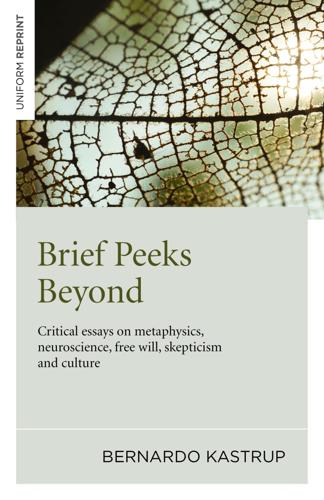
Brief Peeks Beyond: Critical Essays on Metaphysics, Neuroscience, Free Will, Skepticism and Culture
by
Bernardo Kastrup
Published 28 May 2015
(Coyne 2014b). 13 Seth Lloyd writes: ‘Although the basic laws of physics are comparatively simple in form, they give rise, because they are computationally universal, to systems of enormous complexity.’ (Lloyd 2006, p. 176). Perhaps the most evocative demonstrations of how simple rules can generate unfathomable complexity come from computational systems called cellular automata (Ilachinski 2001). 14 Lehar writes: ‘Beyond the farthest things you can perceive in all directions, i.e. above the dome of the sky, and below the solid earth under your feet, or beyond the walls and ceiling of the room you see around you, is located the inner surface of your true physical skull, beyond which is an unimaginably immense external world of which the world you see around you is merely a miniature internal replica.’
…
Available from: http://richannel.org/the-magic-of-consciousness [Accessed 19 December 2014]. Huxley, A. (2009). The Perennial Philosophy. New York, NY: HarperPerennial. Huxley, A. (2011). The Doors of Perception: includes Heaven & Hell. London, UK: Thinking Ink Limited. Ilachinski, A. (2001). Cellular Automata: A Discrete Universe. Singapore: World Scientific. Journal of Transpersonal Psychology. Palo Alto, CA: Association for Transpersonal Psychology. Jung, C. G. (1969). Aion: Researches into the Phenomenology of the Self, Second Edition. Princeton, NJ: Princeton University Press. Jung, C. G. (1972).

Fancy Bear Goes Phishing: The Dark History of the Information Age, in Five Extraordinary Hacks
by
Scott J. Shapiro
“universal constructor”: Von Neumann, Theory of Self-Reproducing, 271. As Christopher Langton noted, universal construction is not necessary for self-replication. Von Neumann built one because he was interested in sufficient conditions for self-replication, not necessary ones. Christopher G. Langton, “Self-Reproduction in Cellular Automata,” Physica D 10 (1984): 135–44. “cellular automaton”: On cellular automata, see von Neumann, Theory of Self-Reproducing. two hundred thousand cells: John von Neumann never finished his automaton. The most complete “organ” of his self-replicator that he produced was the Memory Control (MC) unit. The MC and the linear array (L) that contains the “blueprint” make up the “tape unit” (MC + L); the entire UC is the tape unit plus a constructing unit (CU): UC = CU + (MC + L).
…
Philosophers have long noted: Gideon Yaffe, Manifest Activity: Thomas Reid’s Theory of Action (Oxford: Clarendon Press, 2004), 79. self-replicating entities: The internal blueprint need not be fixed, but can be composed dynamically through self-inspection. See, e.g., Jesús Ibáñez et al., “Self-Inspection Based Reproduction in Cellular Automata,” Lecture Notes in Artificial Intelligence 929 (1995): 564–76. In cases of self-inspecting self-replicators, the self-replicator “contains” a blueprint in the trivial sense that it is the blueprint. Sarah Gordon: Email correspondence between Scott Shapiro and Sarah Gordon, June 2021, and telephone interview, June 7, 2021.
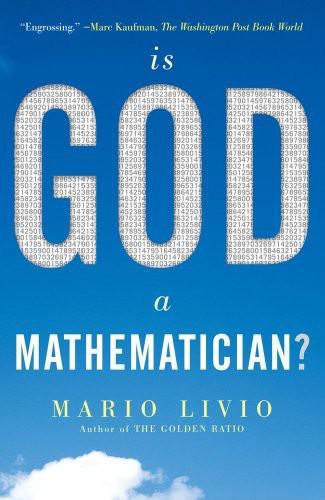
Is God a Mathematician?
by
Mario Livio
Published 6 Jan 2009
However, was it truly inevitable that mathematics would start with these particular disciplines? Computer scientist Stephen Wolfram argued in his massive book A New Kind of Science that this was not necessarily the case. In particular, Wolfram showed how starting from simple sets of rules that act as short computer programs (known as cellular automata), one could develop a very different type of mathematics. These cellular automata could be used (in principle, at least) as the basic tools for modeling natural phenomena, instead of the differential equations that have dominated science for three centuries. What was it, then, that drove the ancient civilizations toward discovering and inventing our special “brand” of mathematics?
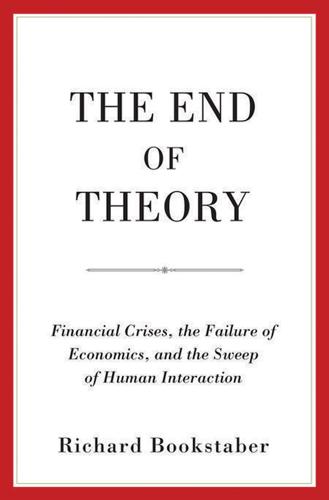
The End of Theory: Financial Crises, the Failure of Economics, and the Sweep of Human Interaction
by
Richard Bookstaber
Published 1 May 2017
The Mind of a Mnemonist: A Little Book about a Vast Memory. Trans. Lynn Solotaroff. New York: Basic Books. Lynch, Peter. 2008. “The Origins of Computer Weather Prediction and Climate Modeling.” Journal of Computational Physics 227: 3431–44. doi: 10.1016/j.jcp.2007.02.034. Maerivoet, Sven, and Bart De Moor. 2005. “Cellular Automata Models of Road Traffic.” Physics Report 419, no. 1: 1–64. doi: 10.1016/j.physrep.2005.08.005. Majdandzic, Antonio, Boris Podobnik, Sergey V. Buldyrev, Dror Y. Kenett, Shlomo Havlin, and H. Eugene Stanley. 2014. “Spontaneous Recovery in Dynamical Networks.” Nature Physics 10, no. 1: 34–38. doi: 10.1038/nphys2819.
…
, 118–119, 174 Calvinism, 58 Cambridge University Press, 52 cascades: and the financial crisis of 2008, 159–160 (see also financial crisis of 2008); fire sales and, 140; liquidity during, 128, 152 (see also liquidity); margin calls during, 14; occurrence of, 159; portfolio insurance and, 146–147; cash providers, 136 CDOs, 161, 164 cellular automata, 37, 95, 97–98 chaos, 29; limits to knowledge and, 51 chatbot. See MGonz Chernobyl, nuclear accident of, 112 Church, Alonzo, 54 Citigroup, 11, 166 Clower, Robert, 85 cockroach, 68, 74; defense mechanism of, 66; and omniscient planner, 66–67 Coleman, Henry, 5 collateral: haircuts and, 131; risk reduction of, 204; transformations of, 131 commercial paper, 136 Commodity Futures Trading Commission (CFTC), 147–148 complexity: and chaos theory, 110–111; in comparison to computational irreducibility, 108, 122; description of, 109–112; and emergence, 108, 122; and ergodicity, 111, 122; and financial crises, 112 (see also financial crises); and informational irreducibility, 109–110; investigation of by Gotfried Wilhelm Leibniz, 109; and neoclassical economics, 123–124 (see also neoclassical economics); and network theory, 110; and nonlinear systems, 110–111; and the OODA loop, 122 (see also OODA Loop); and radical uncertainty, 112, 122; and strategic complexity, 122–124 computational irreducibility, 12, 18, 33; crises and, 105; and heuristics, 65; and the Library of Babel, 62–63; and maps, 26; and mathematical shortcuts, 26; and neoclassical economics, 83 (see also neoclassical economics); and three-body problem, 27–28 (see also three-body problem); and Turing’s halting problem, 55 computers, and the universal Turing machine, 54.

Possible Minds: Twenty-Five Ways of Looking at AI
by
John Brockman
Published 19 Feb 2019
The following is an edited transcript from a live interview with him conducted in December 2015. Over nearly four decades, Stephen Wolfram has been a pioneer in the development and application of computational thinking and responsible for many innovations in science, technology, and business. His 1982 paper “Cellular Automata as Simple Self-Organizing Systems,” written at the age of twenty-three, was the first of numerous significant scientific contributions aimed at understanding the origins of complexity in nature. It was around this time that Stephen briefly came into my life. I had established The Reality Club, an informal gathering of intellectuals who met in New York City to present their work before peers in other disciplines.
…
That’s why history means something. If we could get to the endpoint without going through the steps, history would be, in some sense, pointless. So it’s not the case that we’re intelligent and everything else in the world is not. There’s no enormous abstract difference between us and the clouds or us and the cellular automata. We cannot say that this brainlike neural network is qualitatively different from this cellular-automaton system. The difference is a detailed difference. This brainlike neural network was produced by the long history of civilization, whereas the cellular automaton was created by my computer in the last microsecond.
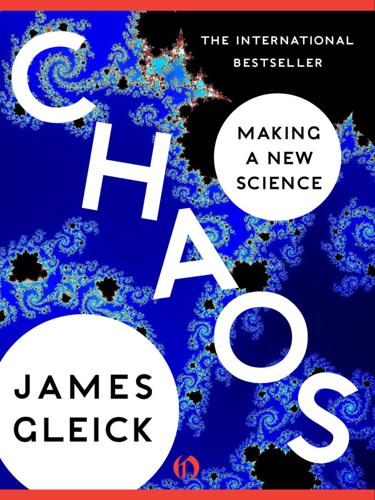
Chaos: Making a New Science
by
James Gleick
Published 18 Oct 2011
(“The first chapter, I have to admit, is 300 pages, okay?” he says.) Then came Stochastic Processes, Modeling Simulation, Cellular Automata, Computation Theory and Information Theory, Scaling, Renormalization, and Fractals, Neural Networks, Attractor Networks, Homogenous Systems, Inhomogenous Systems, and so on. Bar-Yam, the son of a high-energy physicist, had studied condensed matter physics and become an engineering professor at Boston University, but he left in 1997 to found the New England Complex Systems Institute. He had been exposed to Stephen Wolfram’s work on cellular automata and Robert Devaney’s work in chaos and discovered that he was less interested in polymers and superconductors than in neural networks and—he says this with no sense of grandiosity—the nature of human civilization.
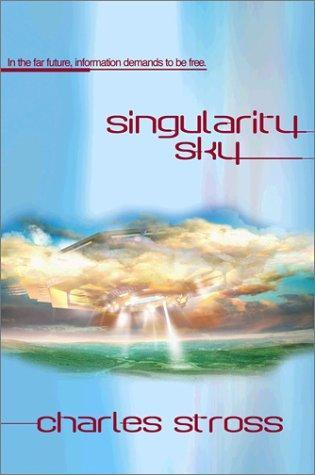
Singularity Sky
by
Stross, Charles
Published 28 Oct 2003
"Herman was unusually vague about it," Martin admitted. "Normally he has a lot of background detail. Every word means something. But it's as if he doesn't want to say too much about the Festival. They're—he called them, uh, glider-gun factories. I don't know if you know about Life—" "Cellular automata, the game?" "That's the one. Glider guns are mobile cellular automata. There are some complex life structures that replicate themselves, or simpler cellular structures; a glider-gun factory is a weird one. It periodically packs itself into a very dense mobile system that migrates across the grid for a couple of hundred squares, then it unpacks itself into two copies that then pack down and fly off in opposite directions.
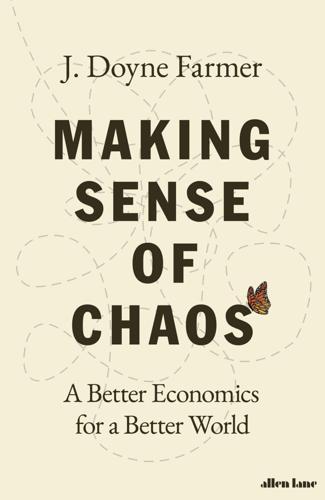
Making Sense of Chaos: A Better Economics for a Better World
by
J. Doyne Farmer
Published 24 Apr 2024
My friends and I read and discussed Norbert Wiener’s ideas about feedback and control, Claude Shannon’s theory of information, John von Neumann’s self-reproducing automaton and Erwin Schrödinger’s reflections about life and the mind.3 The big question we pondered more than all others was the mystery of self-organization: How can disorganized configurations of matter spontaneously become organized? Later, at Los Alamos, I organized conferences and workshops on ‘Cellular Automata’, ‘Evolution, Games and Learning’ and similar topics, and invited leading scholars who were thinking about these things to visit, creating a hub of activity.4 The senior fellows at Los Alamos decided that this kind of work needed its own institution, free from the taint of a weapons laboratory.
…
‘The Evolution of Adventure in Literature and Life’, presented on November 11, 2005, at a conference organized by Marget Cohen, titled ‘Adventure’, at Stanford’s Center of the Study of the Novel. https://www.doynefarmer.com/adventures Ibid. 2013. ‘Hypotheses Non Fingo: Problems with The Scientific Method in Economics’. Journal of Economic Methodology 20 (4): 377–385, doi: 10.1080/1350178X.2013.859408. Farmer, J. Doyne, Tommaso Toffoli and Stephen Wolfram (eds). 1984. Cellular Automata: Proceedings of an Interdisciplinary Workshop, Los Alamos, New Mexico 87545, USA, March 7–11, 1983. New York: North-Holland. Farmer, J. D., Norman H. Packard and Alan S. Perelson. 1986. ‘The Immune System, Adaptation, and Machine Learning’. Physica D: Nonlinear Phenomena 22 (1–3): 187–204, doi: 10.1016/0167-2789(86)90240-X.
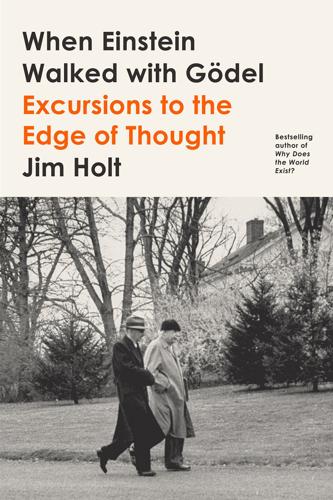
When Einstein Walked With Gödel: Excursions to the Edge of Thought
by
Jim Holt
Published 14 May 2018
Imagine the nightmare of having to draw up neural circuitry on a two-dimensional piece of paper, where there is no room for wires to cross each other without intersecting. In his annotation of Flatland, Ian Stewart cleverly solves this problem for the author by invoking the theory of “cellular automata”: two-dimensional arrays of cells that, communicating with their neighbors according to simple rules, can carry out any task that a computer could accomplish. With cellular automata for brains, Flatlanders would be capable of intelligent behavior (although, as philosophers like John Searle would argue, they might fall short of consciousness). As for more intimate details of the Flatlanders’ existence—their method of sexual congress, for example—the author maintains a proper Victorian reticence.
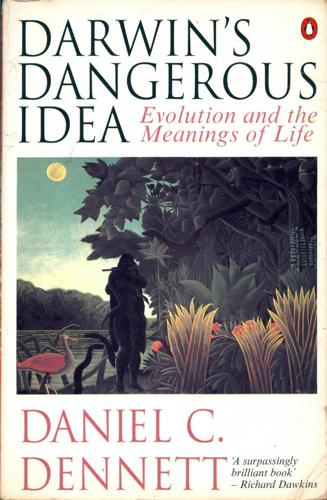
Darwin's Dangerous Idea: Evolution and the Meanings of Life
by
Daniel C. Dennett
Published 15 Jan 1995
His description (posthumously published, 1966) of how an automaton would read its own blueprint and then copy it into its new creation anticipated in impressive detail many of the later discoveries about the mechanisms of DNA expression and replication, but in order to make his proof of the possibility of a self-reproducing automaton mathematically rigorous and tractable, von Neumann had switched to simple, two-dimensional abstractions, now known as cellular automata. Conway's Life-world cells are a particularly agreeable example of cellular automata. Conway and his students wanted to confirm von Neumann's proof in detail by actually constructing a two-dimensional world with a simple physics in which such a self-replicating construction would be a stable, working structure. Like von Neumann, they wanted their answer to be as general as possible, and hence as independent as possible of actual (Earthly?
…
The task of the wise God required to put this world into motion is a task of discovery, not creation, a job for a Newton, not a Shakespeare. What Newton found — and what Conway found — are eternal Platonic fixed points that anybody else in principle could have discovered, not idiosyncratic creations that depend in any way on the particularities of the minds of their authors. If Conway had never turned his hand to designing cellular-automata worlds — if Conway had never even existed — some other mathematician might very well have hit upon exactly the Life world that Conway gets the credit for. So, as we follow the Darwinian down this path, God the Artificer turns first into God the Lawgiver, who now can be seen to merge with God the Lawfinder.
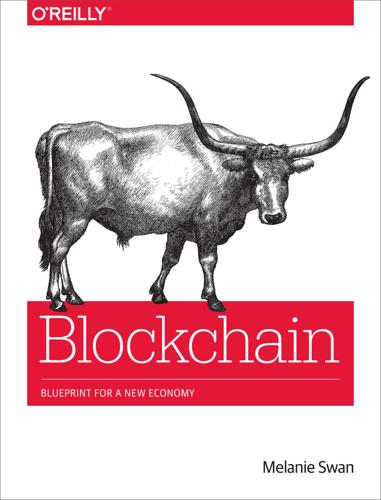
Blockchain: Blueprint for a New Economy
by
Melanie Swan
Published 22 Jan 2014
This could include systems like chaining together simple if-this-then-that (or IFTTT) behavior and the open source Huginn platform for building agents that monitor situations and act on your behalf. A second possible path is implementing programmatic ideas from AI research fields such as Wolfram’s cellular automata, Conway’s Game of Life, Dorigo’s Ant Colony Optimization and Swarm Intelligence, Andy Clark’s embodied cognitive robots, and other general agent-based systems. Chapter 3. Blockchain 3.0: Justice Applications Beyond Currency, Economics, and Markets Blockchain Technology Is a New and Highly Effective Model for Organizing Activity Not only is there the possibility that blockchain technology could reinvent every category of monetary markets, payments, financial services, and economics, but it might also offer similar reconfiguration possibilities to all industries, and even more broadly, to nearly all areas of human endeavor.
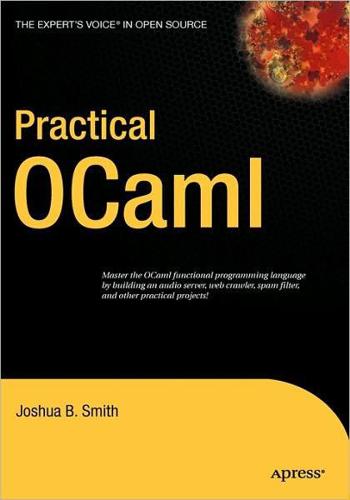
Practical OCaml
by
Joshua B. Smith
Published 30 Sep 2006
Random BMP 620Xch27final.qxd 9/22/06 1:22 AM Page 389 CHAPTER 27 ■ PROCESSING BINARY FILES Figure 27-3. xor BMP Figure 27-4. and BMP 389 620Xch27final.qxd 390 9/22/06 1:22 AM Page 390 CHAPTER 27 ■ PROCESSING BINARY FILES Conway’s Game of Life In 1970, a British mathematician named John Conway created the field of cellular automata when he published the first article on the subject. Conway’s “game” isn’t so much a game played by people as it is a mathematical experiment. The game is an example of emergent behavior because there are only four simple rules that generate an amazing amount of complexity. Conway’s game is also Turing Complete, which means that (given the right initial conditions) the game is as powerful as any “real” computer.
…
See primitive types batch compilers, 405 Bayes’ Theorem, 169 binary files bitmaps and, 383–389 comparing two, 380–383 outputting, 377 parsing, 295 processing, 375– 399 reading, 383–389 bitmap header definitions, 384 blog server example, 278–288 BNF (Backus-Naur Form), 210 Boolean type (bool), 67 bottom-up design, 267 bprintf function, 76 broadcast function, 318 bscanf function, 77, 253 buffers, 80, 110 build tools, 401–409 buildmap function, 172 build_list function, 324 445 620Xidxfinal.qxd 446 9/22/06 4:19 PM Page 446 ■INDEX built-in exceptions, 125, 131 built-in functions, 48 built-in types, 24 buy function, for securities trades database, 54 ■C C code, interfacing with, 349–358 -c compiler flag, 405 .c files, 408 C functions, defining, 352–355 C preprocessor (cpp), 411 C++ Foreign Function Interfaces and, 349 polymorphic classes and, 26 templates and, 25, 160 calculators four-function, 42 guards and, 48 Calendar module, 360 CAM (Categorical Abstract Machine), 3 CAM-ML, 3 Cameleon, 14 Caml Light, 3 Caml Special Light, 4 camlbrowser, 402, 405 CamlIDL library, 359 camlidl tool, 349, 355, 357 Camlp4, 411–429 camlp4o command, 418, 425 CAMLparam macro, 352 CAMLprim, 362 caml_alloc data, 352 caml_alloc_string(length) function, 351 caml_alloc_string(n) function, 352 caml_alloc_tuple(n) function, 352 caml_copy_double(d) function, 352 caml_copy_double(initial_value) function, 352 caml_copy_string(str) string, 352 caml_failwith(argument_string) function, 352 caml_invalid_argument(argument_string) function, 352 caml_raise_end_of_file (void) exception, 352 caml_raise_not_found ( void ) exception, 352 Capability Maturity Model (CMM), 271 Categorical Abstract Machine (CAM), 3 -cc <CCNAME> flag, 406 -cclib -lLIBNAME flag, 406 -ccopt OPTION flag, 406 cellular automata, 390 CGI (Common Gateway Interface), 273–291 advantages/disadvantages of, 274 writing your own functions and, 277–284 channels, 52, 113–117 chars, 64, 377 check_suffix function, 137 choose function, 320 chop_extension function, 137 chop_suffix function, 137 Church, Alonzo, 263 class keyword, 226, 228 classes, 25, 225–229 internal, 233 vs. objects, 226 parameterized, 234 polymorphism and, 230 reasons for using, 227 virtual, 234, 241 client class, 334 client functions, 189 clients, OCaml support for, 179–191 client_app.ml file, 190 cloning objects, 241 close_in function, 114 close_out function, 114 .cma files, 20, 408 .cmi files, 20 CMM (Capability Maturity Model), 271 .cmo files, 20, 408 Cocanwiki web application, 291 code linking options for, 356 coding rules and, 130–133 obtaining line numbers/function names and, 134 ocamllex processing and, 197–201, 222 ocamlyacc processing and, 206, 222 reuse and, 225–228, 267 code completion, 14 code files, 12, 18 collapse function, 46 collections, 89–111 combine function, 96 command-line flags, 311 command-line toplevel, 13 comments documentation extracted from, 145 importance of, 154 ocamldoc for, 146 Common Gateway Interface.

Coders: The Making of a New Tribe and the Remaking of the World
by
Clive Thompson
Published 26 Mar 2019
Back in those early MIT days, she was trying to run a weather-simulation model, but it kept on crashing. Why? Eventually Hamilton learned it was because the hackers had rejiggered the computer’s assembler to suit their desires and hadn’t switched it back. They wanted to muck around with pretty cellular automata; she was trying to do weather science. But the hackers simply hadn’t appeared to think about the repercussions their tinkering had for other people. These guys were companionable with each other but mostly uninterested in talking about their own or others’ inner lives. “I spent my lifetime walking around talking like a robot, talking to a bunch of other robots,” as one of them later said with a sigh.
…
When you take cheap machines that can do nearly anything you tell them to and hand them over to teenagers with essentially no adult supervision—because their parents had no idea what computers were—you create the infinite-monkeys experiment of software. Soon, teenage coders were cobbling together everything and anything: chatbots that would curse and swear, spellbinding forms of artificial life known as “cellular automata,” casino games, little databases and accounting programs, computer music, and endless varieties of games. Everingham was desperate to join this scene. He was from a lower-middle-class family whose parents couldn’t afford to buy him a computer. So he began frantically picking up every spare job he could—mowing lawns, then shoveling snow when winter came—until he’d saved enough, with a contribution from his mother, to get his own VIC-20.

Future Politics: Living Together in a World Transformed by Tech
by
Jamie Susskind
Published 3 Sep 2018
One approach has been to use non-silicon materials in chips for the first time.53 Another possibility is to move from the current paradigm of ‘2D’ integrated circuits—where transistors are arranged side-by-side on a wafer of silicon—to a ‘3D’ approach where transistors are piled high.54 Another approach might be to abandon silicon altogether in favour of carbon nanotubes as the material for building even smaller, more efficient transistors.55 Yet another approach, currently taken by Google, would be to use more special-purpose computer chips for particular functions—chips that do fewer things but much faster.56 Microsoft increasingly uses a new type of chip that could combine much greater speed with flexibility.57 Looking further ahead, engineers at Google and elsewhere are already hard at work developing ‘quantum computers’ which, in certain tasks, are expected to be able to compute well beyond the capabilities of classical computers.58 Another possible alternative to OUP CORRECTED PROOF – FINAL, 26/05/18, SPi РЕЛИЗ ПОДГОТОВИЛА ГРУППА "What's News" VK.COM/WSNWS Increasingly Capable Systems 41 silicon might be to use 2D graphene-like compounds and ‘spintronic’ materials, which compute by harnessing the spin of electrons rather than moving them around.59 There’s also the growing field of neuroelectronics, which seeks to reverse-engineer the neural networks of the human brain while potentially requiring less power than silicon.60 In the still longer term, Quantum Dot Cellular Automata (‘QDCA’) technology may yield an unimaginably small semiconductor capable of doing the work of a transistor, but using much less power and wasting little energy.61 Many of these technologies are still in their infancy and nothing certain can be said about the future of Moore’s Law. But the least likely outcome is that computer science simply grinds to a halt, with hungry young Silicon Valley engineers hanging up their circuit boards and heading for retirement.
…
A. 389 Pokémon Go 58 political campaigning 219–20 political concepts 74–80 political hacking 180–2 political speeches 31, 360–1 political theory 80–5 conceptual analysis 81–3, 84–5 contextual analysis 84–5 future of 84–5 normative analysis 83–5 promise of 9–11 politicians Direct Democracy 240–1, 243 technocratic 251 politics definition 74 nature of 70–4 of politics 72 post-truth 230–1, 237 of prediction 172–6 task of 346 of tech firms 156–9 Popper, Ben 381 Portugal 50 post-politics 362–6 post-truth politics 230–1, 237 Potts, Amanda 422 power 3, 10, 22–3, 89, 345–6 code as 95–7, 154–5 concept 75, 76 conceptual analysis 81 definition 92 digital technology 94–8 faces of 92–3 force 100–21 and liberty 189–94 nature of 90–2 nature of politics 74 perception-control 142–52 private 153–60, 189–94 public 153–60 range of 91–2, 158 scrutiny 122–41 separation of powers 358–9 and significance 92, 158 stability of 92, 158 structural regulation 356, 357–9 supercharged state 347–8 tech firms 348–54 pragmatism 349 predictability of behaviour 127, 138–9 prediction Data Democracy 250 politics of 172–6 totalitarianism 177 predictive policing 174, 176 predictive sentencing 174, 176 preliterate societies 111–12 Preotiuc, Daniel 393 pricing mechanism 269–70, 286 Prince, Matthew 414 Princeton Review 286 printing technology 3D printing 56–7, 178, 329 4D printing 57 Gutenberg’s press 20, 62–3 prioritarians 260 Pritchard, Tom 405 Private Property Paradigm 323–7, 336 privatization of force 100, 114–19 OUP CORRECTED PROOF – FINAL, 28/05/18, SPi РЕЛИЗ ПОДГОТОВИЛА ГРУППА "What's News" VK.COM/WSNWS Index productive technologies 316–17 state ownership 329 taxation 328 profit, rights of 330–1 Promobot 55–6 property 313–41 capital 314–17 concentration of 318–22 concept 77, 78 conceptual analysis 82–3 future 327 new paradigm 327–40 Private Property Paradigm 323–7 types of 324 Wealth Cyclone 322–3 ProPublica 174 Proteus Biomedical 51 Protocols of the Elders of Zion 232 proxy votes 242 public utilities, similarity of tech firms to 157–8 Qin dynasty 131 quantum computers 40 Quantum Dot Cellular Automata (QDCA) technology 41 race/racism data-based injustice 282 neutrality fallacy 288, 289, 290 recidivism prediction 174 rule-based injustice 283, 285 Radicati Group Inc. 387 Ralph Lauren 44 ranking, digital 276–8 algorithmic injustice 289–90 ransomware 182 rateability of life 139–40, 277 rational ignorance, problem of 241 Ratner, Paul 383 Rawls, John 389, 404, 417, 419, 432 justice 257, 258, 262–3 political hacking 181 political theory 9 reality, fragmented 229–31, 237 real property 324 509 recognition, algorithms of 260, 275–8 Reddit 77 regulation of tech firms 350–1, 354–9 reinforcement learning (AI) 35 Remnick, David 367, 412 representative democracy 218, 240, 248 republican freedom 167–8, 184 and democracy 222 and private power 191 wise restraints 185 Republican Party (US) 229 reputation.com 290 reputation systems 289–90 resources, limited 365 responsibility, individual 346–7 Reuters 405 revolution concept 77, 78 Richards, Thomas 369 Rieff, David 397 right to explanation 354 usufructuary 330–1 to work 304–5, 307 Riley v.
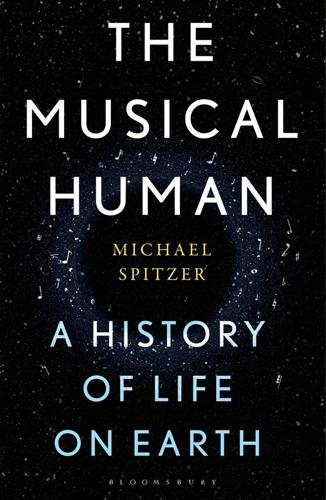
The Musical Human: A History of Life on Earth
by
Michael Spitzer
Published 31 Mar 2021
Ligeti, Xenakis, Grisey and Haas, four of the greatest composers of the late twentieth century, all embraced fractal principles self-consciously, deliberately absorbing the contours of natural processes.65 Reciprocally, computers have been fed pink noise as a raw material to produce music, and fractals have inspired a new breed of algorithmic composition based on ‘cellular automata’ – discrete dynamic systems formed of simple computational units that behave like living cells.66 While the results are not very polished, this musical simulation of artificial life is perhaps the most promising direction for AI composition. And now we see how the musical human and the machine converge on nature, something bigger than them both.
…
The most spectacular example is Wagner’s Ring cycle, which repeats the tragedy of nature defiled across three timelines of gods, heroes and men. All music as a matter of course ‘evolves’ from a thematic or tonal seed planted in its opening bars, and in the space of minutes, not aeons. Such compressed evolution is what drives the latest generation of ‘cellular automata’ AI composers, which we saw in Chapter 11. It is not going too far to define music as a space in which we negotiate interactions between all these aspects of ourselves: the human, the animal, the machine. Music is a playground in all senses. Most importantly, we now also see that my three timelines in the three parts of this book – Life, History, Evolution – express the fractal pattern of music’s nature at the highest level.

Thinking Machines: The Inside Story of Artificial Intelligence and Our Race to Build the Future
by
Luke Dormehl
Published 10 Aug 2016
For years, however, he had been searching for what he refers to as the ‘problem of a lifetime’ to sink his teeth into. An interest in the brain made him consider everything from primate neuroanatomy and insect flight behaviour, to learning in the rat hippocampus or curing Alzheimer’s disease. For a while, Hopfield was fascinated by cellular automata and the prospect of robots that could build copies of themselves. However, after months of research, it led him to a dead end. ‘It is surprisingly difficult to give up on a wrong idea that has been nurtured for a year,’ Hopfield says. But the idea of creating a model of life inside a computer stayed with him.
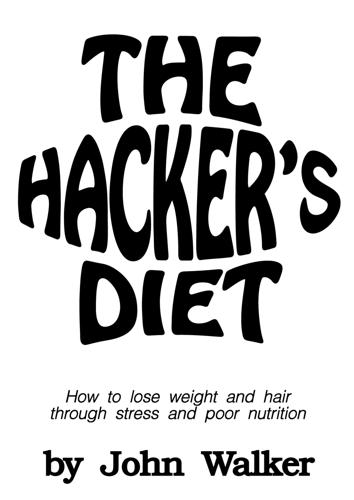
The Hacker's Diet
by
John Walker
Autodesk, one of the five largest personal computer software companies, has become a leader in the computer aided design industry; its product, AutoCAD, is the de facto worldwide standard for computer aided design and drafting. John Walker is co-author of AutoCAD and several other Autodesk products, including AutoSketch, AutoShade, and Cellular Automata Laboratory. His first book, The Autodesk File, was published in 1989 by New Riders Publishing. It chronicles Autodesk's growth from $60,000 pooled by a bunch of programmers to a billion dollar company in less than eight years. Despite good reviews, The Autodesk File never became a bestseller.

Our Final Invention: Artificial Intelligence and the End of the Human Era
by
James Barrat
Published 30 Sep 2013
Humans should not stand in the way: Kristof, Nicholas D., “Robokitty,” New York Times Magazine, August 1, 1999. In fact, de Garis: De Garis, Hugo, Brain Builder Group, Evolutionary Systems Department, ATR Human Information Processing Research Laboratories, “CAM-BRAIN The Evolutionary Engineering of a Billion Neuron Artificial Brain by 2001 which Grows/Evolves at Electronic Speeds inside a Cellular Automata Machine (CAM),” last modified 1995, http://citeseerx.ist.psu.edu/viewdoc/summary?doi=10.1.1.48.8902 (accessed June 22, 2011). a system will consider stealing: Omohundro, “Foresight Vision Talk: Self-Improving AI and Designing 2030.” They are going to want: Omohundro, “The Nature of Self-Improving Artificial Intelligence.”
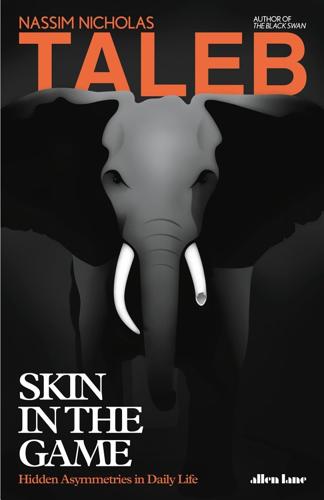
Skin in the Game: Hidden Asymmetries in Daily Life
by
Nassim Nicholas Taleb
Published 20 Feb 2018
O. Wilson) about the terminal flaws in the selfish gene theory.fn2 The question is: could it be that much of what we have read about the advances in behavioral sciences is nonsense? Odds are it is. Many people have been accused of racism, segregationism, and somethingism without merit. Using cellular automata, a technique similar to renormalization, the late Thomas Schelling showed a few decades ago how a neighborhood can be segregated without a single segregationist among its inhabitants. ZERO-INTELLIGENCE MARKETS The underlying structure of reality matters much more than the participants, something policymakers fail to understand.
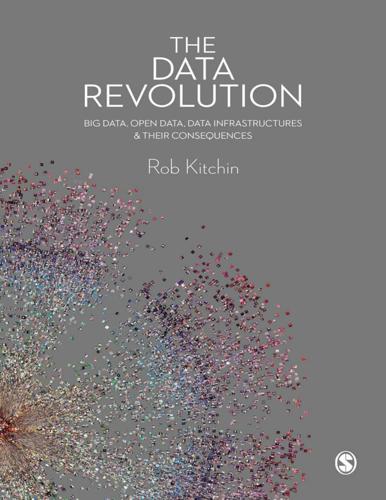
The Data Revolution: Big Data, Open Data, Data Infrastructures and Their Consequences
by
Rob Kitchin
Published 25 Aug 2014
Bates, J. (2012) ‘“This is what modern deregulation looks like”: co-optation and contestation in the shaping of the UK’s Open Government Data Initiative’, The Journal of Community Informatics, 8(2), http://www.ci-journal.net/index.php/ciej/article/view/845/916 (last accessed 6 February 2013). Bates, J. (2013) ‘Opening up public data’, SPERI Comment, 21 May. http://speri.dept.shef.ac.uk/2013/05/21/opening-public-data/(last accessed 18 September 2013). Batty, M. (2007) Cities and Complexity: Understanding Cities with Cellular Automata, Agent Based Models, and Fractals. MIT Press, Cambridge, MA. Batty, M., Axhausen, K.W., Giannotti, F., Pozdnoukhov, A., Bazzani, A., Wachowicz, M., Ouzounis, G. and Portugali, Y. (2012) ‘Smart cities of the future’, European Physical Journal Special Topics, 214: 481–518. Baym, N.K. (2013) ‘Data not seen: the uses and shortcomings of social media metrics’, First Monday, 18(10), http://firstmonday.org/ojs/index.php/fm/article/view/4873/3752 (last accessed 3 January 2014).
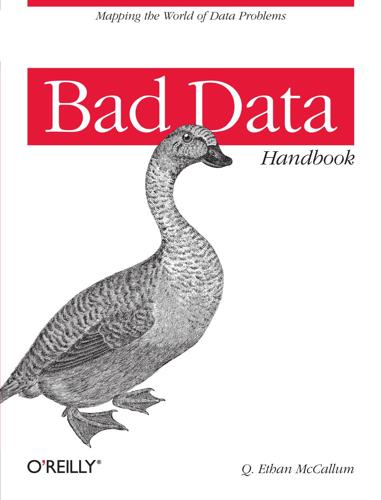
Bad Data Handbook
by
Q. Ethan McCallum
Published 14 Nov 2012
The Delicate Sound of a Combinatorial Explosion… We’ve introduced the problem and sketched out a rudimentary solution in just a few pages, but imagine how a real system like this might evolve over an extended period of months or even years with a team of people involved. It’s easy to see how the complexity could be overlooked or taken for granted as the nature of the problem we set out to solve. A system can start out simple, but very quickly become complex. This fact has been deeply explored in the study of complex systems and cellular automata. To see this idea in action, consider a classic technique for defining a complex graphical object by starting with two simple objects: “One begins with two shapes, an initiator and a generator…each stage of the construction begins with a broken line and consists in replacing each straight interval with a copy of the generator, reduced and displaced so as to have the same end points as those of the interval being replaced.”

Life After Google: The Fall of Big Data and the Rise of the Blockchain Economy
by
George Gilder
Published 16 Jul 2018
The real world offers intrinsically parallel problems such as images that flood the eye all at once, whether you’re driving a car in the snow or summoning a metaverse with computer-generated graphics or pattern-matching in “machine learning” argosies across the seas of big data. The von Neumann bottleneck was recognized by von Neumann himself. In response, he proposed a massively parallel architecture called cellular automata, which led to his last book before his death at age fifty-seven. In The Computer and the Brain, he contemplated a parallel solution called neural networks, which were based on a primitive idea of how billions of neurons might work together in the human neural system. Von Neumann concluded the brain is a non-von machine nine orders of magnitude slower than the gigahertz he prophesied for computers back in 1957.
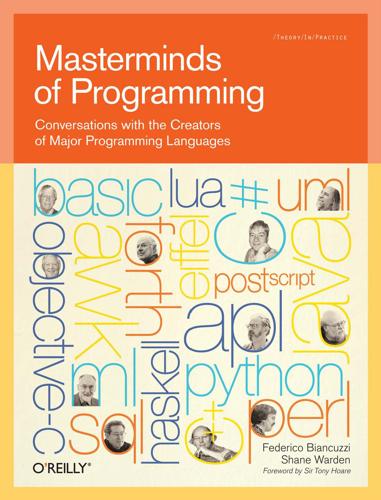
Masterminds of Programming: Conversations With the Creators of Major Programming Languages
by
Federico Biancuzzi
and
Shane Warden
Published 21 Mar 2009
I pulled some of those ideas into UML, but data flow architecture doesn’t seem to replace von Neumann architecture in most cases. So I had my shot and didn’t quite make it. There are also cellular automata. I think over half of my fellow grad students tried to build on them a highly parallel computer. That has to be the right approach, because that’s how the universe is constructed. (Or maybe not. Modern physics is stranger than fiction. The latest speculations suggest that space and time arise out of something more primitive.) But cellular automata seem suited to only certain geometric problems, very important problems to be sure, but not general-case problems. People haven’t figured out how to program them for the general case.
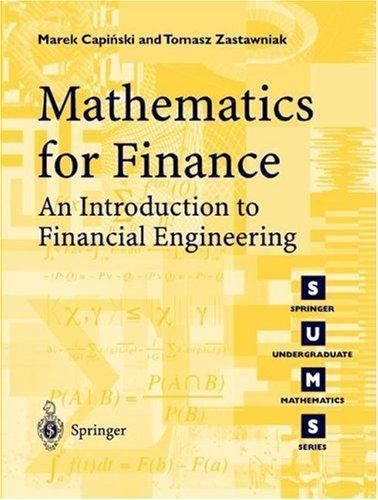
Mathematics for Finance: An Introduction to Financial Engineering
by
Marek Capinski
and
Tomasz Zastawniak
Published 6 Jul 2003
Springer-Verlag: Mathematica in Education and Research Vol 4 Issue 3 1995 article by Roman E Maeder, Beatrice Amrhein and Oliver Gloor ‘Illustrated Mathematics: Visualization of Mathematical Objects’ page 9 fig 11, originally published as a CD ROM ‘Illustrated Mathematics’ by TELOS: ISBN 0-387-14222-3, German edition by Birkhauser: ISBN 3-7643-5100-4. Mathematica in Education and Research Vol 4 Issue 3 1995 article by Richard J Gaylord and Kazume Nishidate ‘Traffic Engineering with Cellular Automata’ page 35 fig 2. Mathematica in Education and Research Vol 5 Issue 2 1996 article by Michael Trott ‘The Implicitization of a Trefoil Knot’ page 14. Mathematica in Education and Research Vol 5 Issue 2 1996 article by Lee de Cola ‘Coins, Trees, Bars and Bells: Simulation of the Binomial Process’ page 19 fig 3.
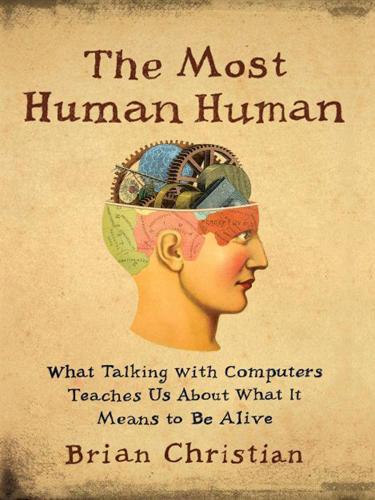
The Most Human Human: What Talking With Computers Teaches Us About What It Means to Be Alive
by
Brian Christian
Published 1 Mar 2011
You get this from the human-computer dialogues: And this from the human-human dialogues: Now if that difference isn’t night and day, I don’t know what is. Over. 1. Some equations (the Newtonian parabolas that projectiles follow, for instance) are such that you can just plug in any old future value for time and get a description of the future state of events. Other calculations (e.g., some cellular automata) contain no such shortcuts. Such processes are called “computationally irreducible.” Future time values cannot simply be “plugged in”; rather, you have to run the simulation all the way from point A to point Z, including all intermediate steps. Stephen Wolfram, in A New Kind of Science, attempts to reconcile free will and determinism by conjecturing that the workings of the human brain are “irreducible” in this way: that is, there are no Newtonian-style “laws” that allow us shortcuts to knowing in advance what people will do.
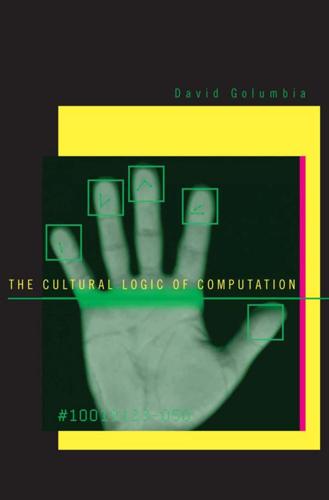
The Cultural Logic of Computation
by
David Golumbia
Published 31 Mar 2009
McGuinness. First paperback edition. New York: Routledge, 1974. ———. 1953. Philosophical Investigations. Third edition. Cambridge, MA: Blackwell, 2002. ———. 1972. On Certainty. New York: Harper & Row. ———. 1984. Culture and Value. Chicago: University of Chicago Press. Wolfram, Stephen. 1994. Cellular Automata and Complexity: Collected Papers. Boulder, CO: Westview Press. ———. 2002. A New Kind of Science. Champaign, IL: Wolfram Media. Wright, Ronald. 2005. A Short History of Progress. New York: Carroll & Graf Publishers. Ziff, Paul. 1961. Semantic Analysis. Ithaca, NY: Cornell University Press. Zittrain, Jonathan. 2008.

All Your Base Are Belong to Us: How Fifty Years of Video Games Conquered Pop Culture
by
Harold Goldberg
Published 5 Apr 2011
Little Computer People was occasionally hilarious and featured a slow-moving cartoonlike character called Darren who would write you letters saying, “I have many hobbies that occupy my time.” To prove it, he watched TV, exercised, and searched for someone to live in his computer with him. Finally, Wright was impressed with John Horton Conway’s theories of cellular automata, which were espoused in The Game of Life. In his 1970s simulation game, Conway showed that you could emulate the complex patterns of the birth and death of organisms living together in society—and everything in between. All these combined to influence Wright as he dreamed up a project whose working title was Home Tactics, the Experimental Domestic Simulator.
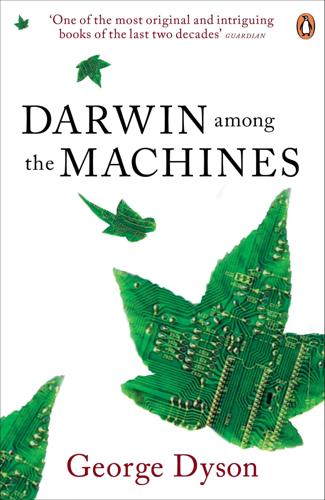
Darwin Among the Machines
by
George Dyson
Published 28 Mar 2012
, 60. 37.Samuel Butler, Unconscious Memory (London: David Bogue, 1880); reprinted as vol. 6 of The Shrewsbury Edition of the Works of Samuel Butler (London: Jonathan Cape, 1924), 16. 38.William Paley, 1802, Natural Theology, vol. 2, reprinted, with illustrative notes, etc., in four volumes (London: Charles Knight, 1845), 9. 39.John von Neumann, in Arthur Burks, ed., Theory of Self-Reproducing Automata (Urbana: University of Illinois Press, 1966), 47. 40.John Myhill, “The Abstract Theory of Self-Reproduction,” in Mihajlo D. Mesarovic, ed., Views on General Systems Theory, Proceedings of the Second Systems Symposium at Case Institute of Technology, 1964; reprinted in Arthur Burks, ed., Essays on Cellular Automata (Urbana: University of Illinois Press, 1970), 218. 41.John von Neumann, 1948, “The General and Logical Theory of Automata,” in Lloyd A. Jeffress, ed., Cerebral Mechanisms in Behavior: The Hixon Symposium (New York: Hafner, 1951), 31. 42.Robert Chambers, Vestiges of the Natural History of Creation (London: John Churchill, 1844), 222–223. 43.Nils Barricelli, in Paul S.

The Master Algorithm: How the Quest for the Ultimate Learning Machine Will Remake Our World
by
Pedro Domingos
Published 21 Sep 2015
Unfortunately, a NOR gate is not the Master Algorithm any more than a Lego brick is the universal toy. It can certainly be a universal building block for toys, but a pile of Legos doesn’t spontaneously assemble itself into a toy. The same applies to other simple computation schemes, like Petri nets or cellular automata. Moving on to more sophisticated alternatives, what about the queries that any good database engine can answer, or the simple algorithms in a statistical package? Aren’t those enough? These are bigger Lego bricks, but they’re still only bricks. A database engine never discovers anything new; it just tells you what it knows.
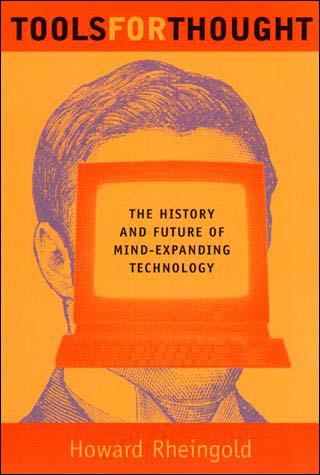
Tools for Thought: The History and Future of Mind-Expanding Technology
by
Howard Rheingold
Published 14 May 2000
The way the task was accomplished by living organisms of the type found on earth was only one way it could be done. In principle, the task could be done by a machine that could follow a plan, because the plan, and not the mechanism that carried it out, was a part of the system with the special, heretofore mysterious property that distinguished life from nonliving matter. Von Neumann approached "cellular automata" on an abstract level, just as Turing did with his first machines. As early as 1948, he showed that any self-replicating system must have raw materials, a program that provides instructions, an automaton that follows the instructions and arranges the symbols in the cells of a Turing-type machine, a system for duplicating instructions, and a supervisory unit -- which turned out to be an excellent description of the DNA direction of protein synthesis in living cells.

Cities Are Good for You: The Genius of the Metropolis
by
Leo Hollis
Published 31 Mar 2013
, ArXiv, 13 March 2012, Vol 1 Ai, W., ‘The City: Beijing’, Newsweek, 28 August 2011 Aker, J. and Mbiti, I., ‘Mobile Phones and Economic Development in Africa’, Centre for Global Development Paper 211, June 2010 Alexiou, K., Johnson, J. and Zamenpoulos, T., Embracing Complexity in Design, Routledge, 2010 Amin, A. and Graham, S., The Ordinary City, Transactions of the Institute of British Geographers, 1997 Appleyard, D., Liveable Streets: Protected Neighbourhoods, Annals of American Academy of Political and Social Science, September 1980 Appleyard, D., Liveable Streets, Routledge, 2012 Arkarasprasertkul, N., Politicisation and the Rhetoric of Shanghai Urbanism, www.scholar.harvard.edu/non/publications, 2008 Arputham, J., Developing New Approaches for People-centred Development, Environment and Urbanisation, 2008 Arthur, C., The Thinking City, BBC Focus, January 2012 Barney, S. A. et al, The Etymologies of Isidore of Seville, CUP, 2006 Barros, J. and Sobeiera, F., City of Slums: Self Organisation Across Scales, CASA Working Paper 55, June 2002 Batty, M., Cities and Complexity: Understanding Cities with Cellular Automata, Agent-based Models and Fractals, MIT Press, 2005 Batty, M., Complexity in City Systems: Understanding, Evolution and Design, UCL Working Paper 117, March 2007 Beavan, C., No Impact Man, Piatkus, 2011 Bergdoll, B. and Martin, R., Foreclosed: Rehousing the American Dream, MoMA, 2012 Bettencourt, L. and West, G., ‘A Unified Theory of Urban Living’, Nature, 21 October 2010 Bettencourt, L., Lobo, J. et al, Growth Innovation, Scaling and the Pace of Life in Cities, PNAS, 16 April 2007 Bound, K. and Thornton, I., Our Frugal Future, NESTA, July 2012 Brand, S., Whole Earth Discipline: An Ecopragmatist Manifesto, Atlantic Books, 2010 Bratton, W. and Tumin, Z., Collaborate or Perish: Reaching Across Boundaries in a Networked World, Crown Business, 2012 Brugman, J., Welcome to the Urban Revolution: How cities are changing the world, Bloomsbury Press, 2010 Bucher, U. and Finka, M., The Electronic City, BWV, 2008 Burdett, R. and Rode, P., Cities: Towards a Green Economy, UNEP, 2011 Burnham, S., Trust Design, Part Four, ‘Public Trust’ supplement to Volume 30, 2011, www.premsela.org Burra, S., Towards a Pro-poor Framework for Slum Upgrading in Mumbai, India, Environment and Urbanisation, 2005 Burra, S., Community-based, Built and Managed Toilet Blocks in Indian Cities, Environment and Urbanisation, 2003 Burrell, J., Livelihoods and the Mobile Phone in Rural Uganda, Grameen Foundation, USA, January 2008 Burrows, E.

Machines of Loving Grace: The Quest for Common Ground Between Humans and Robots
by
John Markoff
Published 24 Aug 2015
Alan Turing, for example, had written about the possibility the previous year, to receptive audiences on both sides of the Atlantic. McCarthy was thinking about intelligence as a mathematical abstraction rather than something realizable—along the lines of Turing—through building an actual machine. It was an “automaton” notion of creating human intelligence, but not of the kind of software cellular automata that von Neumann would later pursue. McCarthy focused instead on an abstract notion of intelligence that was capable of interacting with the environment. When he told von Neumann about it, the scientist exclaimed, “Write it up!” McCarthy thought about the idea a lot but never published anything.
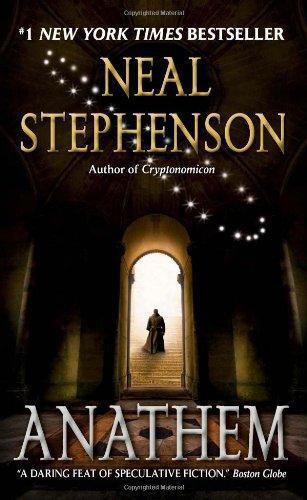
Anathem
by
Neal Stephenson
Published 25 Aug 2009
You look down on it from above and say, ‘Oh, that looked like flanking.’ But if there’s no commander to see the field and direct their movements, can they really perform coordinated maneuvers?” “That’s a little like Saunt Taunga’s Question,” I pointed out (“Can a sufficiently large field of cellular automata think?”). “Well, can they?” “I’ve seen ants work together to carry off part of my lunch, so I know they can coordinate their actions.” “But if I’m one of a hundred ants all pushing on the same raisin, I can feel the raisin moving, can’t I—so the raisin itself is a way that they communicate with one another.
…
The Orithenans had used a system of computational chanting that, it was plain to see, was rooted in traditions that their founders had brought over from Edhar. To that point, it was clearly recognizable to any Edharian. It was a way of carrying out computations on patterns of information by permuting a given string of notes into new melodies. The permutation was done on the fly by following certain rules, defined using the formalism of cellular automata. After the Second Sack reforms, newly computerless avout had invented this kind of music. In some concents it had withered away, in others mutated into something else, but at Edhar it had always been practiced seriously. We’d all learned it as a sort of children’s musical game. But at Orithena they had been doing new things with it, using it to solve problems.

The Age of Spiritual Machines: When Computers Exceed Human Intelligence
by
Ray Kurzweil
Published 31 Dec 1998
Toepperwein, L. L., et al. Robotics Applications for Industry: A Practical Guide. Park Ridge: Noyes Data Corporation, 1983. Toffler, Alvin. Powershift. New York: Bantam Books, 1990. ————. The Third Wave: The Classic Study of Tomorrow. New York: Bantam Books, 1980. Toffoli, Tommaso and Norman Margolis. Cellular Automata Machines: A New Environment for Modeling. Cambridge, MA: MIT Press, 1987. Torrance, Stephen B., ed. The Mind and the Machine: Philosophical Aspects of Artificial Intelligence. Chichester, UK: Ellis Horwood, 1986. Traub, Joseph F., ed. Cohabiting with Computers. Los Altos, CA: William Kaufmann, 1985.
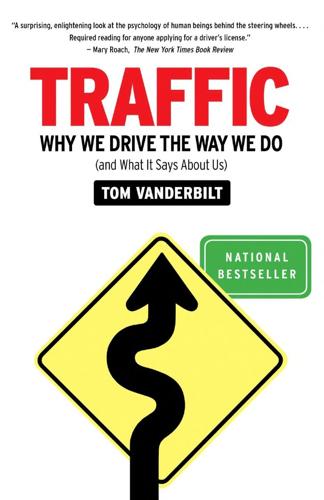
Traffic: Why We Drive the Way We Do (And What It Says About Us)
by
Tom Vanderbilt
Published 28 Jul 2008
each car behind it will stop: One simulation compared the “oscillations” and “amplifications” found in stop-and-go traffic to those found in queues. “Perturbations” in the queue, or the way people stopped and started, were often observed to grow larger from the front to the back of the queue in simulators using cellular automata. See Bongsoo Son, Tawan Kim, and Yongjae Lee, “A Simulation Model of Congested Traffic in the Waiting Line,” Computational Science and Its Applications: ICCSA 2005, vol. 3481 (2005), pp. 863–69. the harder it is to predict: An interesting parallel has been drawn between the way nonlinear traffic flows behave and the way supply chains work in the world of business.
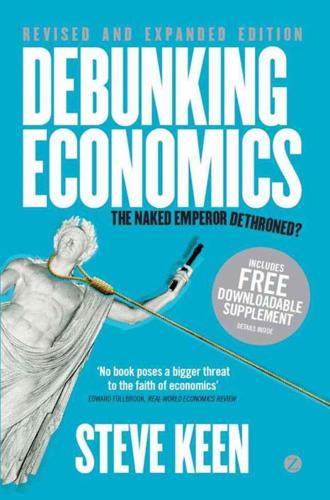
Debunking Economics - Revised, Expanded and Integrated Edition: The Naked Emperor Dethroned?
by
Steve Keen
Published 21 Sep 2011
Oakley, A. (1983) The Making of Marx’s Critical Theory, London: Routledge and Kegan Paul. Obama, B. (2009) ‘Obama’s remarks on the economy,’ New York Times, 14 April. O’Brien, Y.-Y. J. C. (2007) ‘Reserve requirement systems in OECD countries,’ SSRN eLibrary. Oda, S. H., K. Miura, K. Ueda and Y. Baba (2000) ‘The application of cellular automata and agent models to network externalities in consumers’ theory: a generalization of life game,’ in W. A. Barnett, C. Chiarella, S. Keen, R. Marks and H. Schnabl (eds), Commerce, Complexity and Evolution, New York: Cambridge University Press. O’Hara, M. (1995) Market Microstructure Theory, Cambridge: Blackwell.

Rationality: From AI to Zombies
by
Eliezer Yudkowsky
Published 11 Mar 2015
The masters of causality search for conditional independence, screening-off and Markov neighborhoods, among bits and groups of bits. The so-called “color” appears to play a role in neighborhoods and screening, so it’s not just the equivalent of surface reflectivity. People search for simple equations, simple cellular automata, simple decision trees, that can predict or compress the message. Physicists invent entire new theories of physics that might describe universes projected onto the grid—for it seems quite plausible that a message such as this is being sent from beyond the Matrix. After receiving 32 × 512 × 256 = 4,194,304 bits, around one and a half months, the stars stop flickering.
…
I do urge you to investigate Life if you’ve never played it—it’s important for comprehending the notion of “physical law.” Conway’s Life has been proven Turing-complete, so it would be possible to build a sentient being in the Life universe, although it might be rather fragile and awkward. Other cellular automata would make it simpler. Could you, by creating a simulated universe, escape the reach of God? Could you simulate a Game of Life containing sentient entities, and torture the beings therein? But if God is watching everywhere, then trying to build an unfair Life just results in the God stepping in to modify your computer’s transistors.

The Transhumanist Reader
by
Max More
and
Natasha Vita-More
Published 4 Mar 2013
Yes, as Dawkins says they are creatures naturally evolved in their physical universe and they cannot violate their physics (Dawkins 2006), but they can violate ours if they want. Make this simple experiment: Run a Game of Life program, choose an initial pattern, and let it evolve for a while. Now, stop the program, flip a cell, and resume the program. You have just performed a miracle: something that goes against the physical laws (the simple cellular automata evolution rules of Life) of the lower-level reality that you are simulating. Of course the Game of Life is too simple to contain conscious observers, but hypothetical observers within the game would observe an event that cannot be understood in terms of the physical laws of their universe. A miracle.
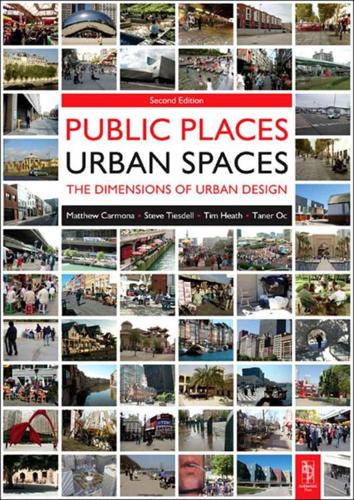
Public Places, Urban Spaces: The Dimensions of Urban Design
by
Matthew Carmona
,
Tim Heath
,
Steve Tiesdell
and
Taner Oc
Published 15 Feb 2010
(In)civilty and the city, Urban Studies, 43(5–6) 919–938 Baran, P K; Rodriquez, D A & Khattak, A J (2008), space syntax and walking in a New Urbanist and suburban neighbourhoods, Journal of Urban Design, 13(1), 5–28 Barnett, J (2003) Redesigning Cities: Principles, Practices, Implementation, Planners Press, Chicago, IL Barnett, J (1982) An Introduction to Urban Design, Harper & Row, New York Barnett, J (1974) Urban Design as Public Policy, Harper & Row, New York Barrett, S; Stewart, M & Underwood, J (1978) The Land Market and the Development Process, Occasional paper 2, SAUS, University of Bristol, Bristol Barthes, R (1967) Elements of Semiology, Hill & Wang, New York Barthes, R (1968) The death of the author, in Barthes, R (1977) Image–Music–Text, Flamingo, London, 142–148 Bartlett, K (2003) Testing the “Popsicle Test”: Realities of retail shopping in New “Traditional Neighbourhood” Development, Urban Studies 140(8), 1471–1485 Barton, H & Tsourou, C (2000) Healthy Urban Planning, Spon Press, London Barton, H; Davis, G & Guise, R (1995) Sustainable Settlements: A Guide for Planners, Designers, and Developers, Local Government Management Board, Luton Barton H; Grant, M & Guise, R (2003) Shaping Neighbourhoods, A Guide for Health, Sustainability and Vitality, Spon Press, London Barton, H (1996) Going green by design, Urban Design Quarterly, 57, January, 13–18 Barton, H; Davis, G; & Guise, R (1994) Sustainable Settlements: A Guide for Planners, Designers, and Developers, Local Government Management Board, Luton Batty, M (2008) Hierarchy, scale and complexity in urban design in Haas, T New Urbanism and Beyond: Designing Cities for the Future, Rizzoli International, New York, 258–261 Batty, M (2005) Cities and Complexity Understanding Cities with Cellular Automata, Agent-Based Models, and Fractals, MIT Press, Cambridge, Mass Baudrillard, J (1994; in French 1981) Simulacra and Simulation, University of Michigan, Ann Arbor Baudrillard, J (1983; in French 1981) Simulations, Semiotext, New York Beauregard, R A (2005) The textures of property markets: Downtown Housing and Office Conversions in New York City, Urban Studies 42 (13) 2431–2445 Beck U (1992) Risk Society: Towards a New Modernity, Sage, London Bell D (2005) The emergence of contemporary masterplans: Property markets and the value of urban design, Journal of Urban Design, 10(1): 81–110 Bell, P A; Fisher, J D; Baum, A & Greene, T C (1990) Environmental Psychology (third edition) Holt, Rinehart & Winston, Inc., London Bemelmans-Videc, M-L (2007) Introduction: Policy instrument choice and evaluation, in Bemelmans-Videc, M-L Rist, R; & Vedung, E (2007) (editors) Carrots, Sticks and Sermons: Policy Instruments and Their Evaluation, Transaction Publishers, London, 1–20 Ben-Joseph E (2005) The Code of the City: Standards and the Hidden Language of Place Making, MIT Press, Cambridge Mass Ben-Joseph, E (1995) Changing the residential street scene: Adopting the shared street (Woonerf) concept to the suburban environment, Journal of the American Planning Association, 61(4) 504–515 Bentley, I (1999) Urban Transformations: Power, People and Urban Design, Routledge, London Bentley, I (1998) Urban design as an anti-profession, Urban Design Quarterly, 65, 15 Bentley, I (1990) Ecological urban design, Architects' Journal, 192, 24 October, 69–71 Bentley, I (1976) What is urban design?
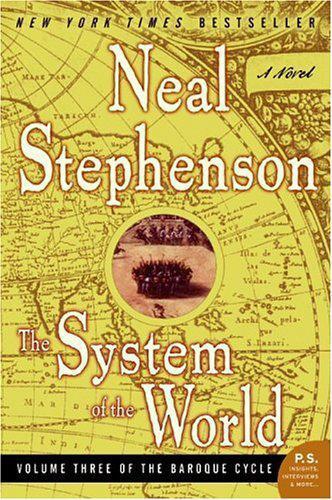
The system of the world
by
Neal Stephenson
Published 21 Sep 2004
But out of a concern for their privacy and a desire not to seem like I’m clinging to their ankles, I’ll draw a veil over those conversations. Suffice it to say that the Royal Society crowd written about in these books has many descendants and heirs today, who are capable of talking learnedly about monads, cellular automata, the calculus dispute, absolute time and space, &c. at the drop of a hat, and that it’s been my privilege to know a few of them. They seem pleasantly surprised to learn that someone actually wants to write a novel about such topics, and I in turn have been pleasantly surprised to find that they are actually willing to spend time talking to me, and out of this, quite a few good conversations have arisen over the years.